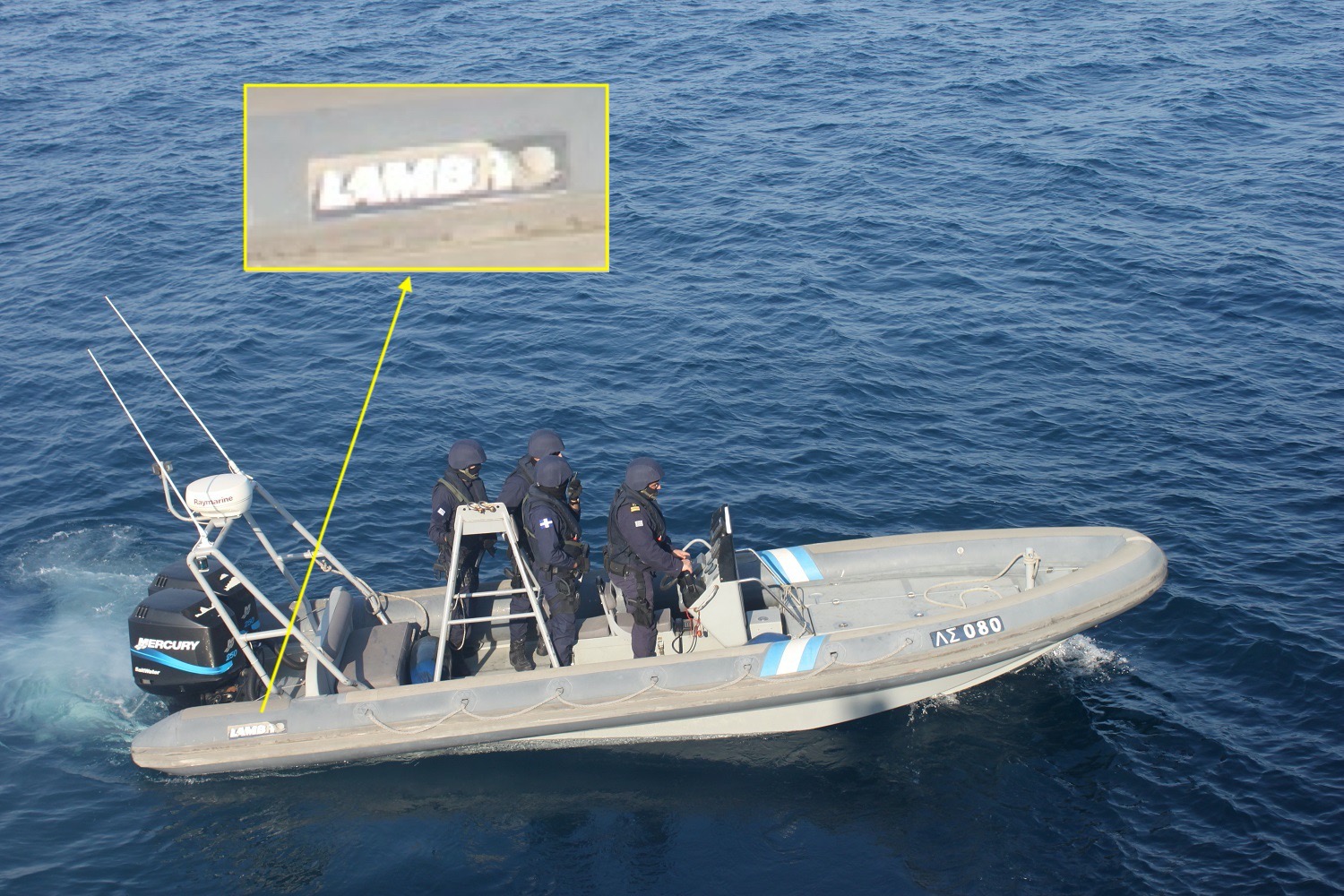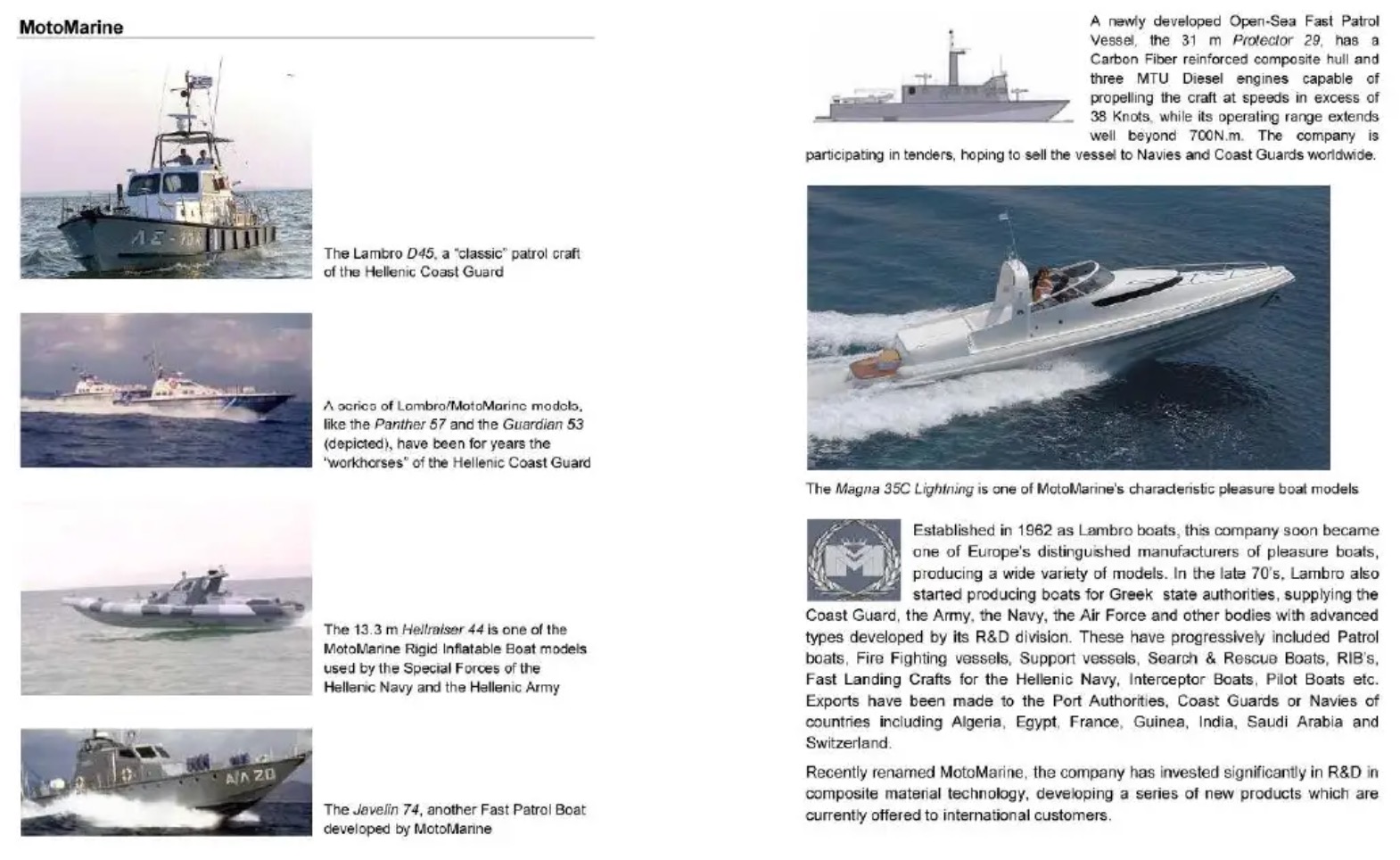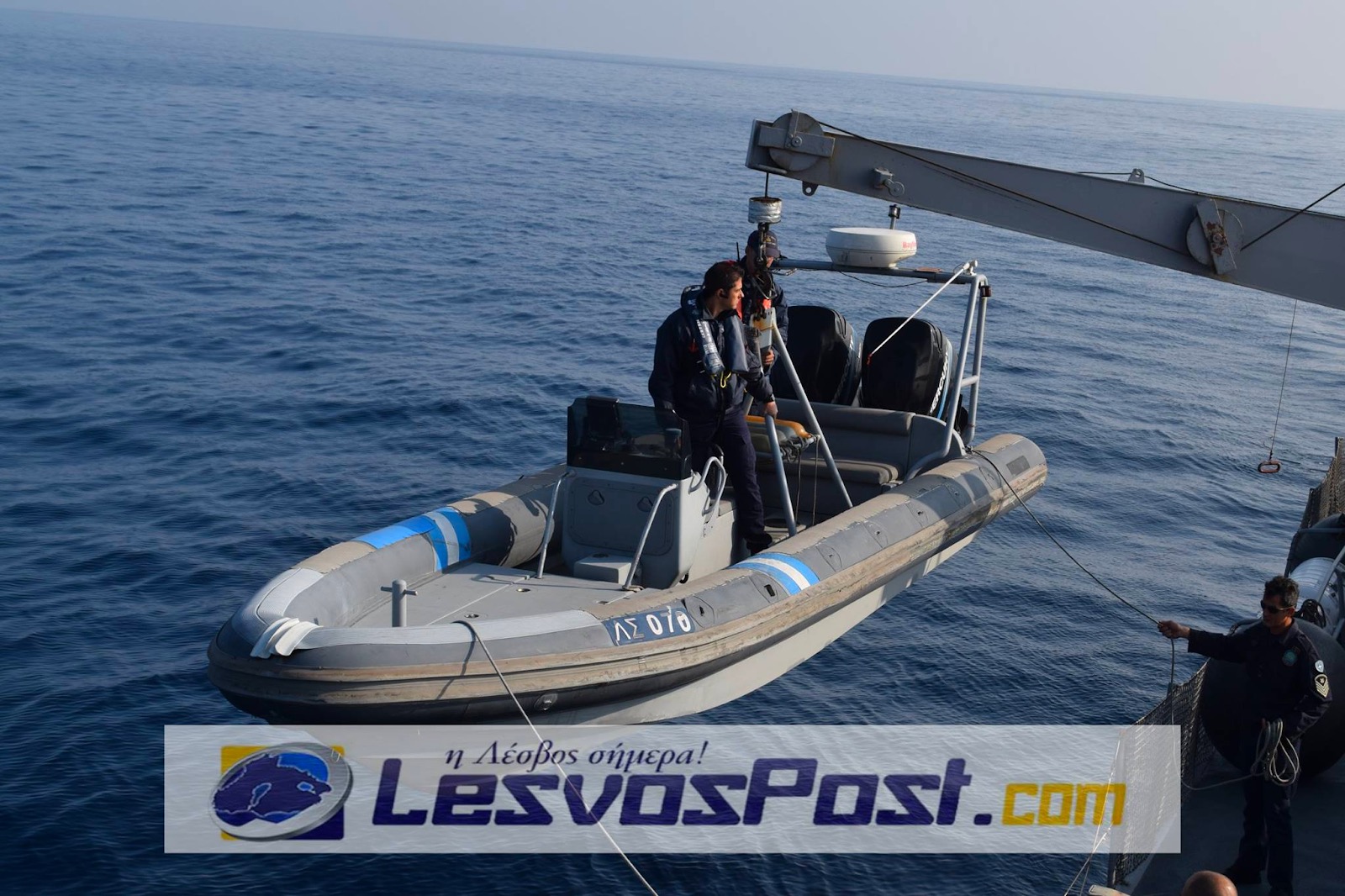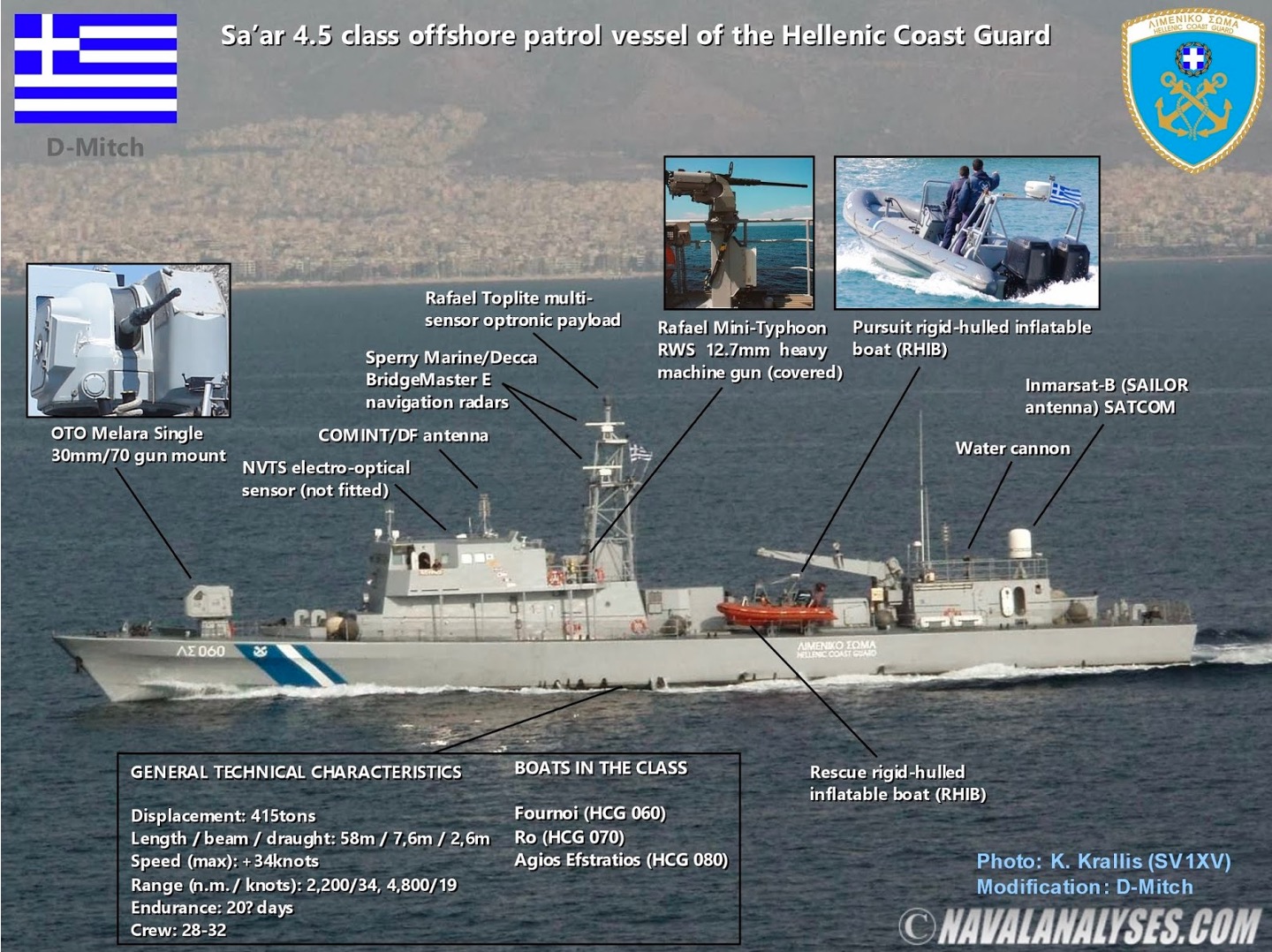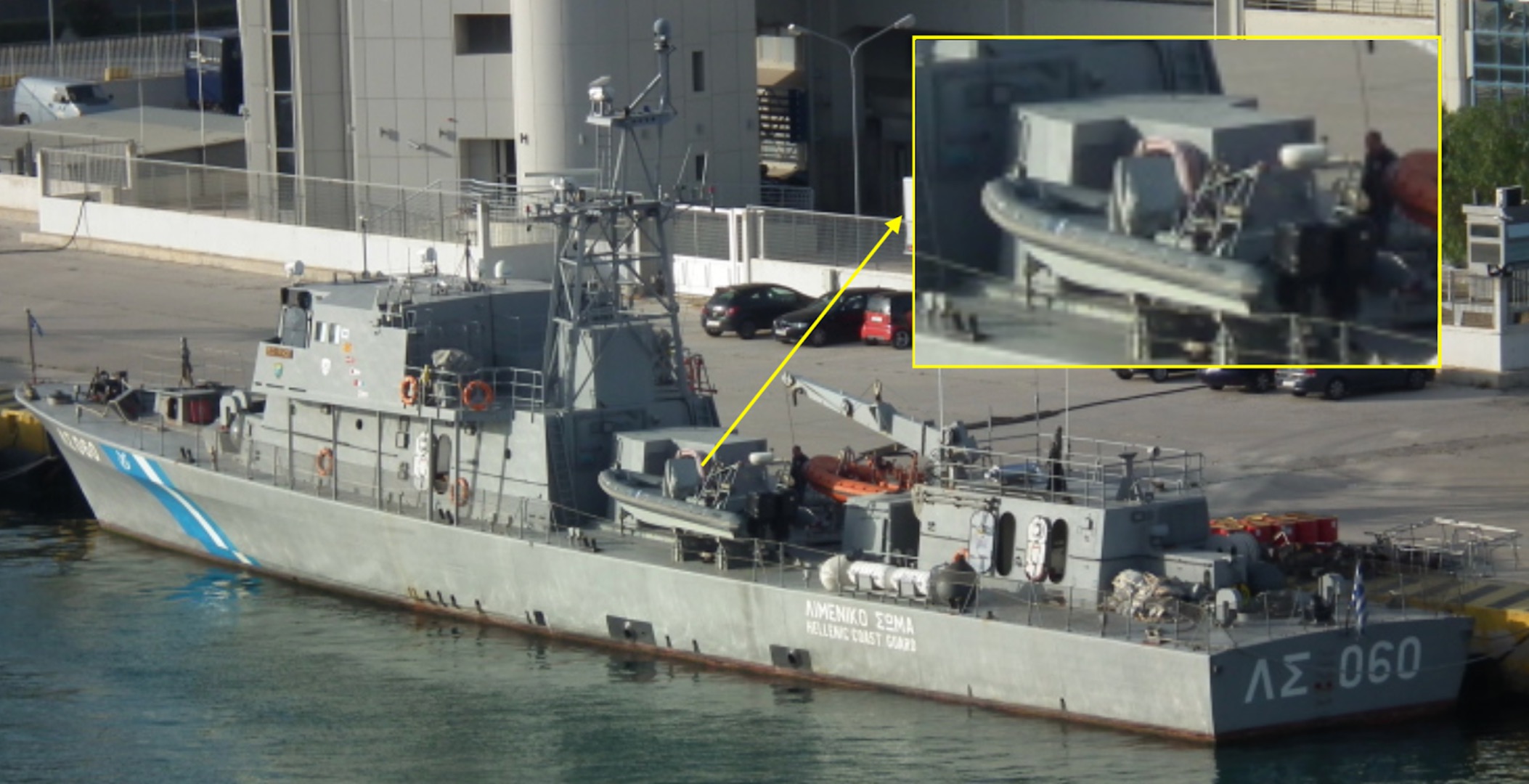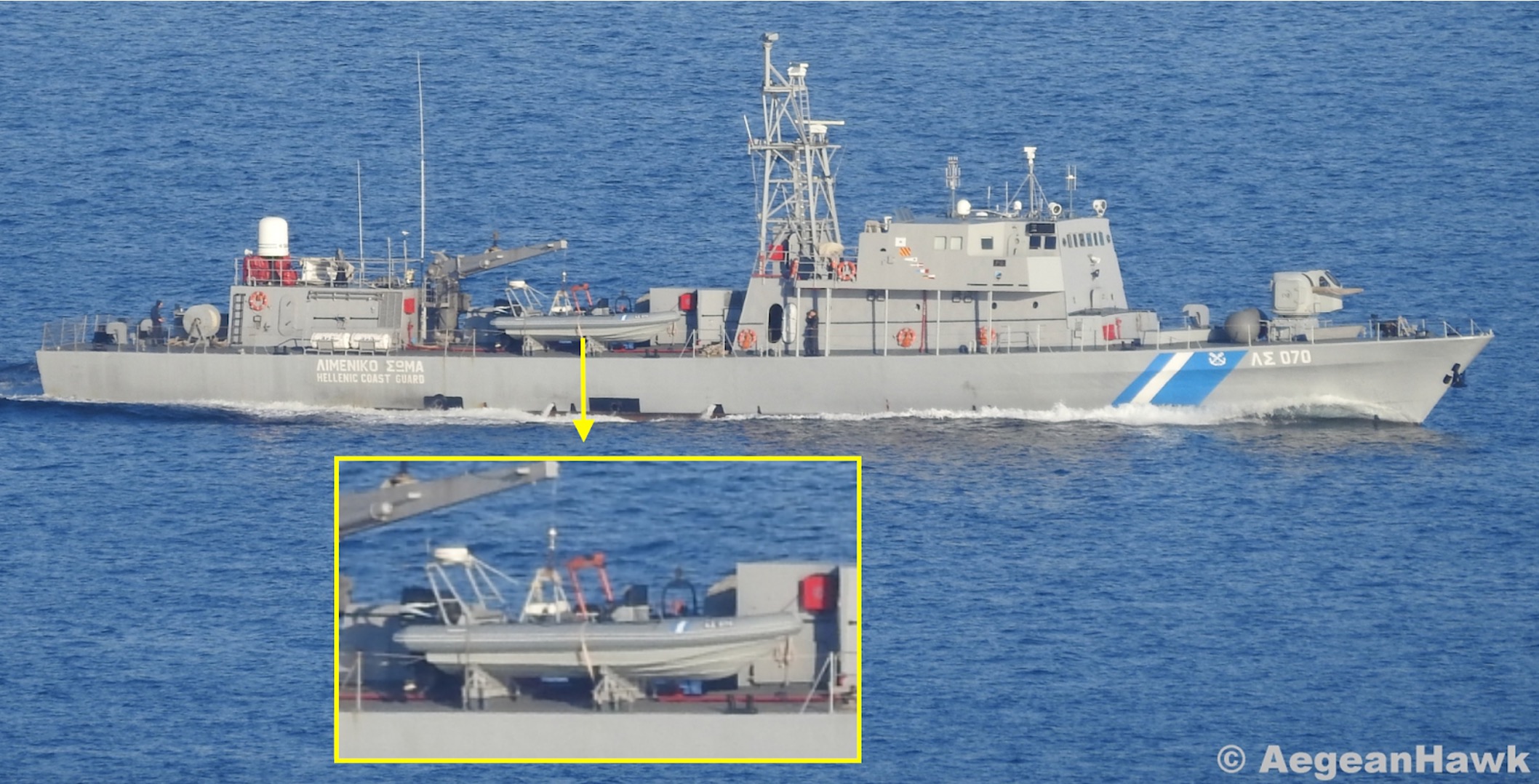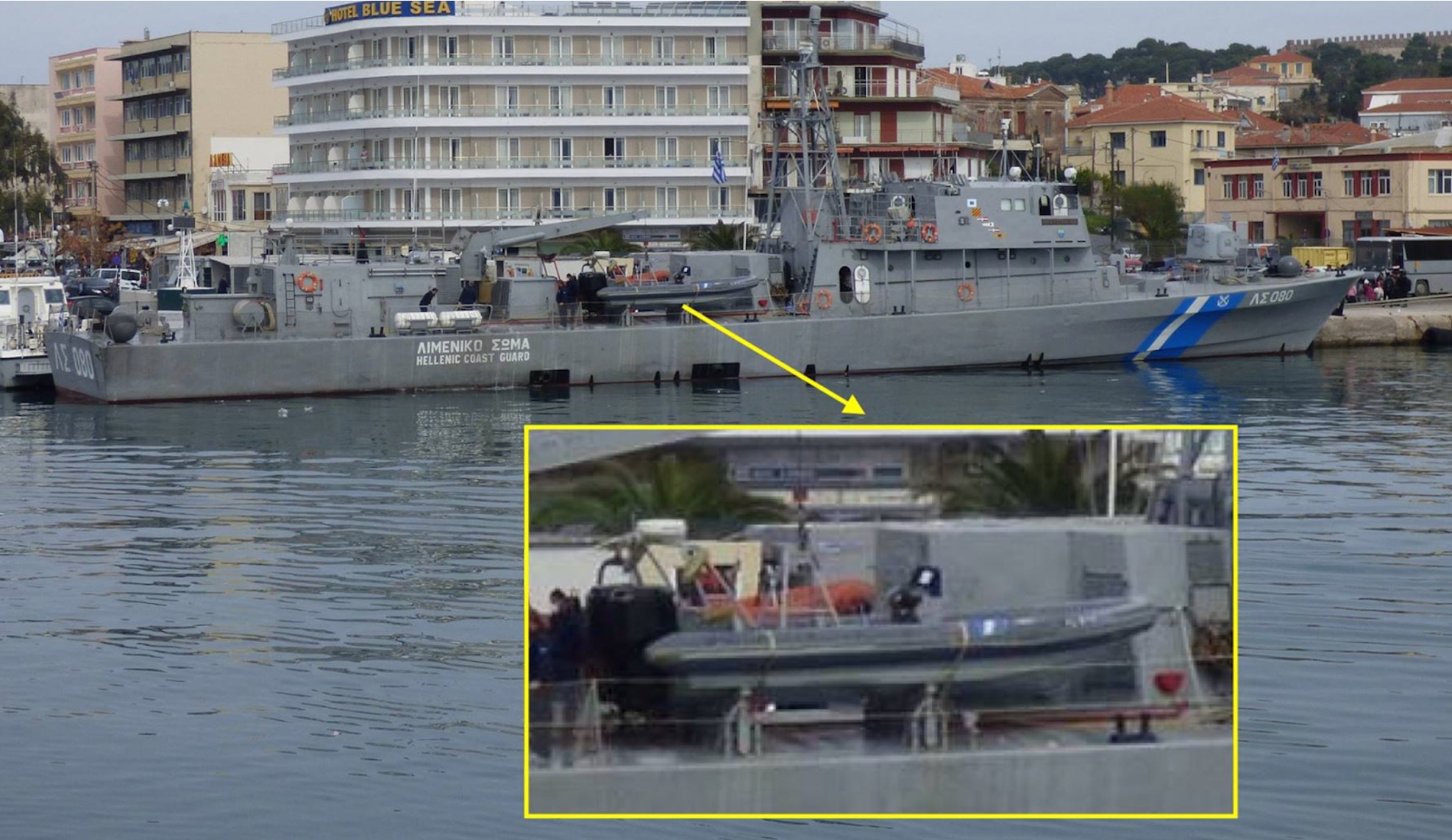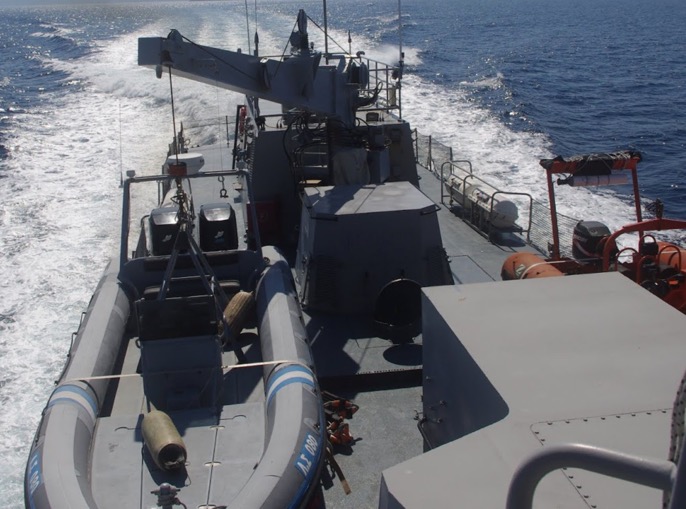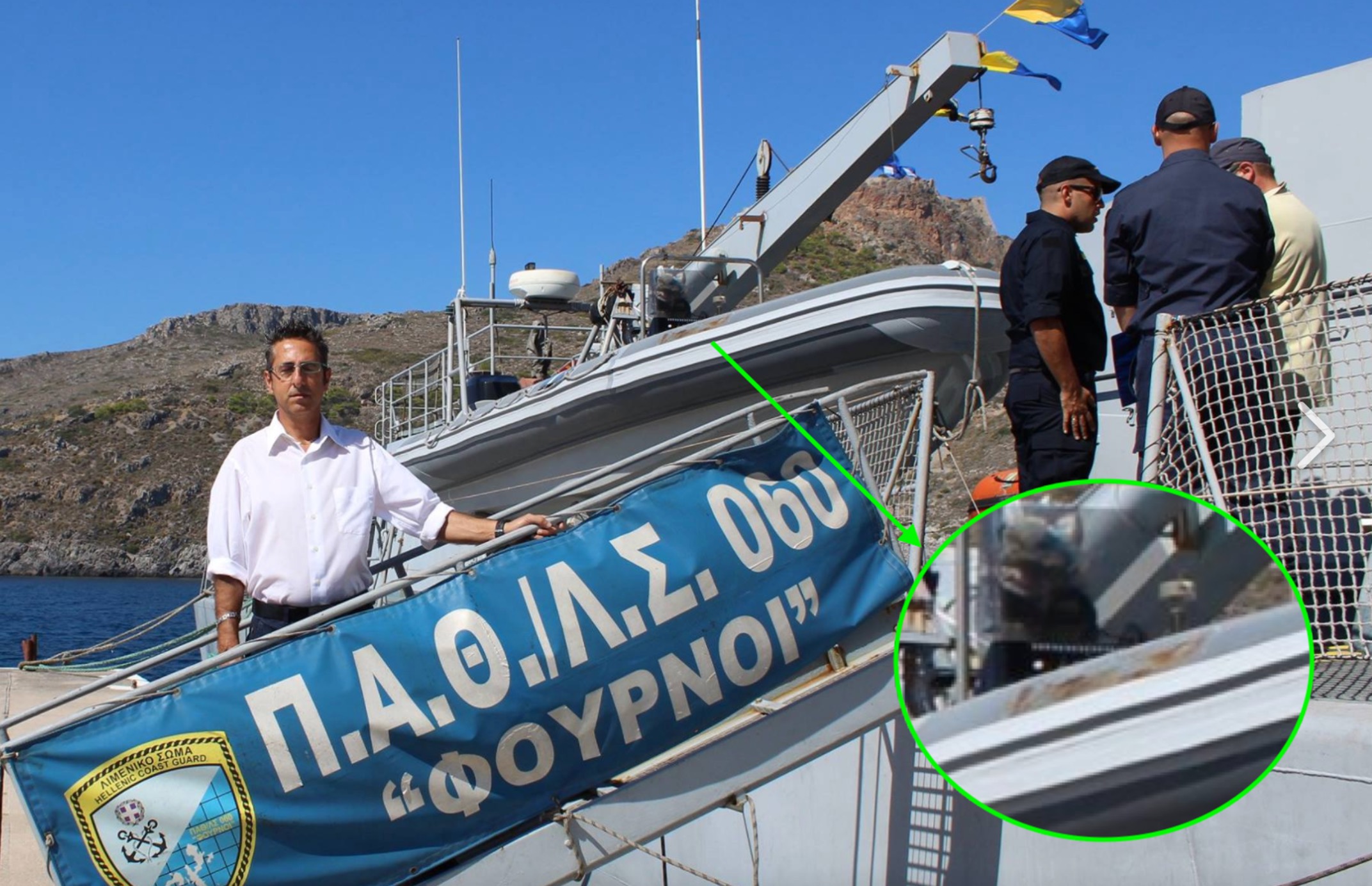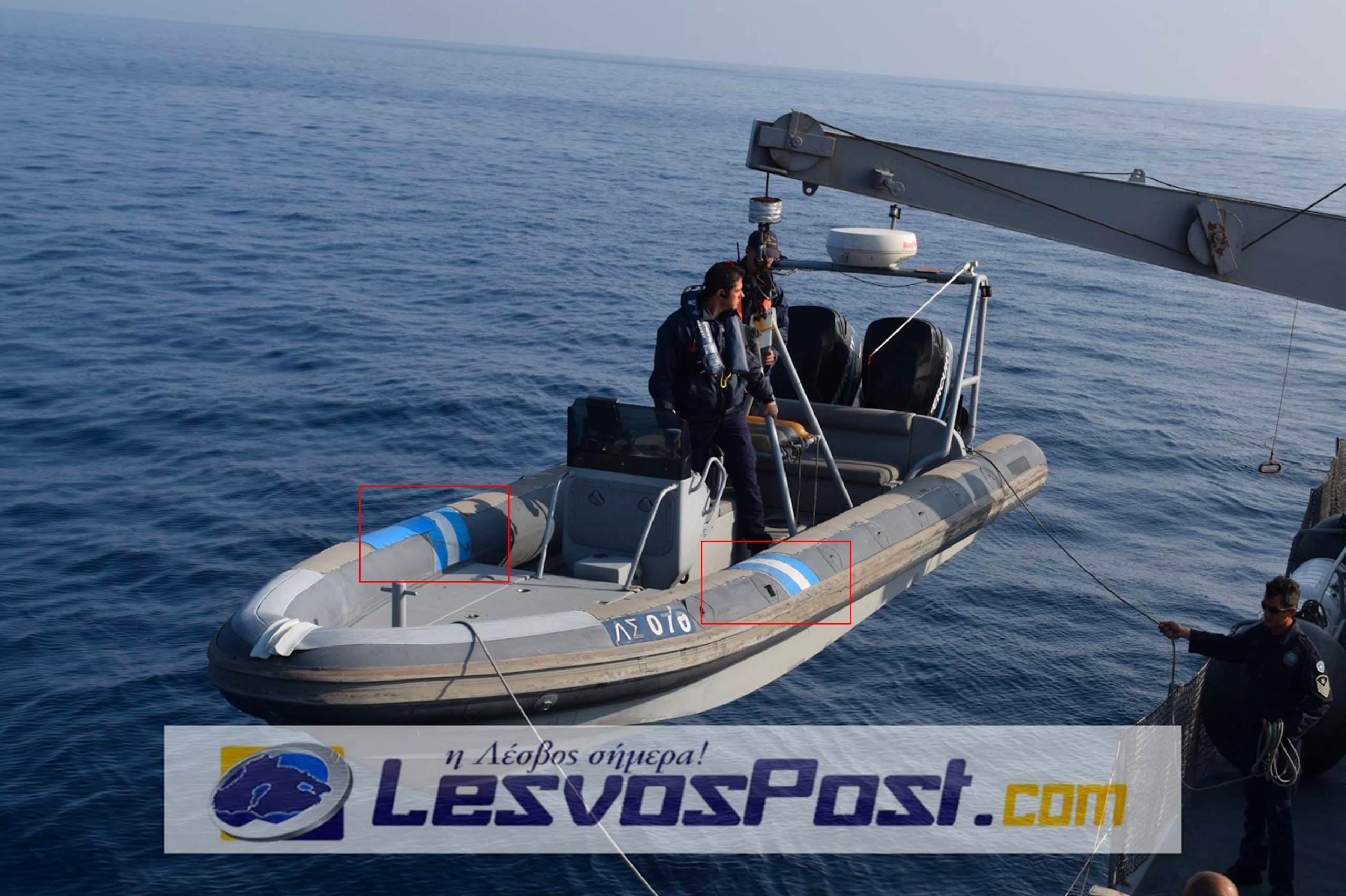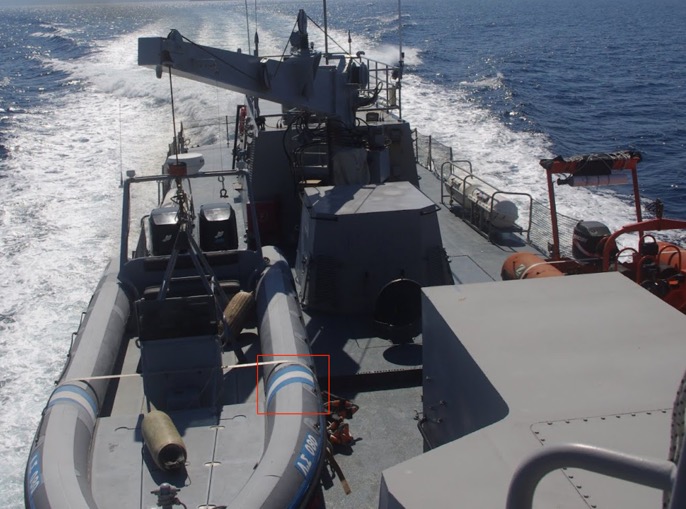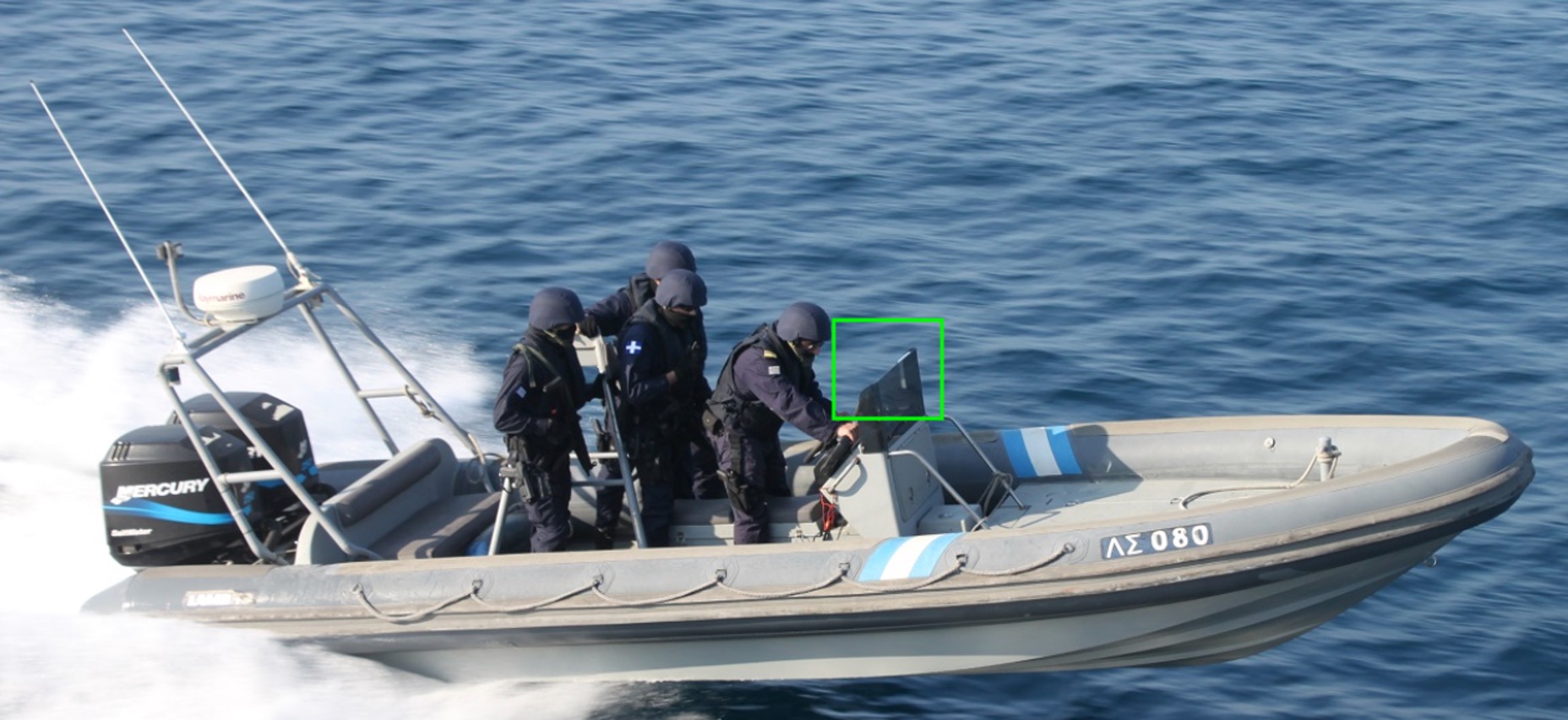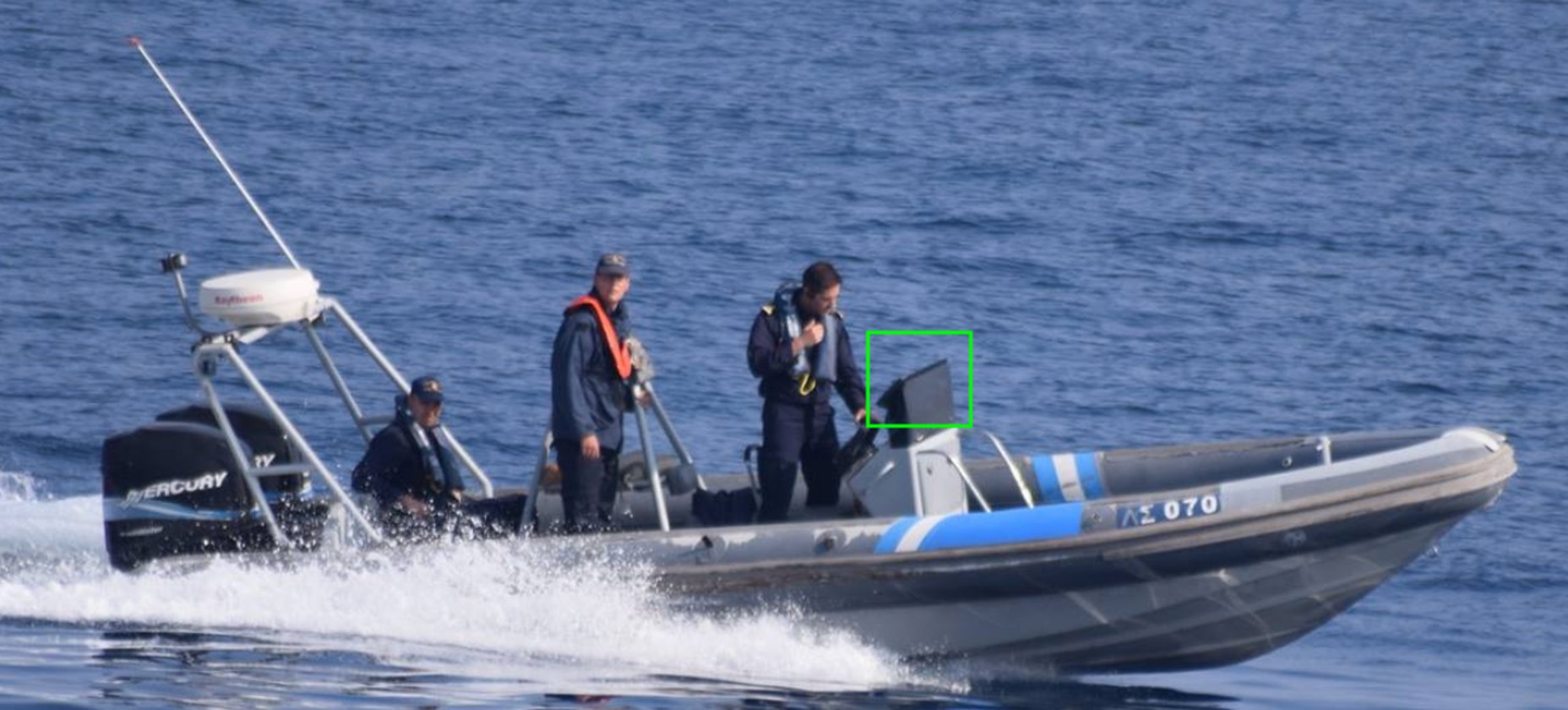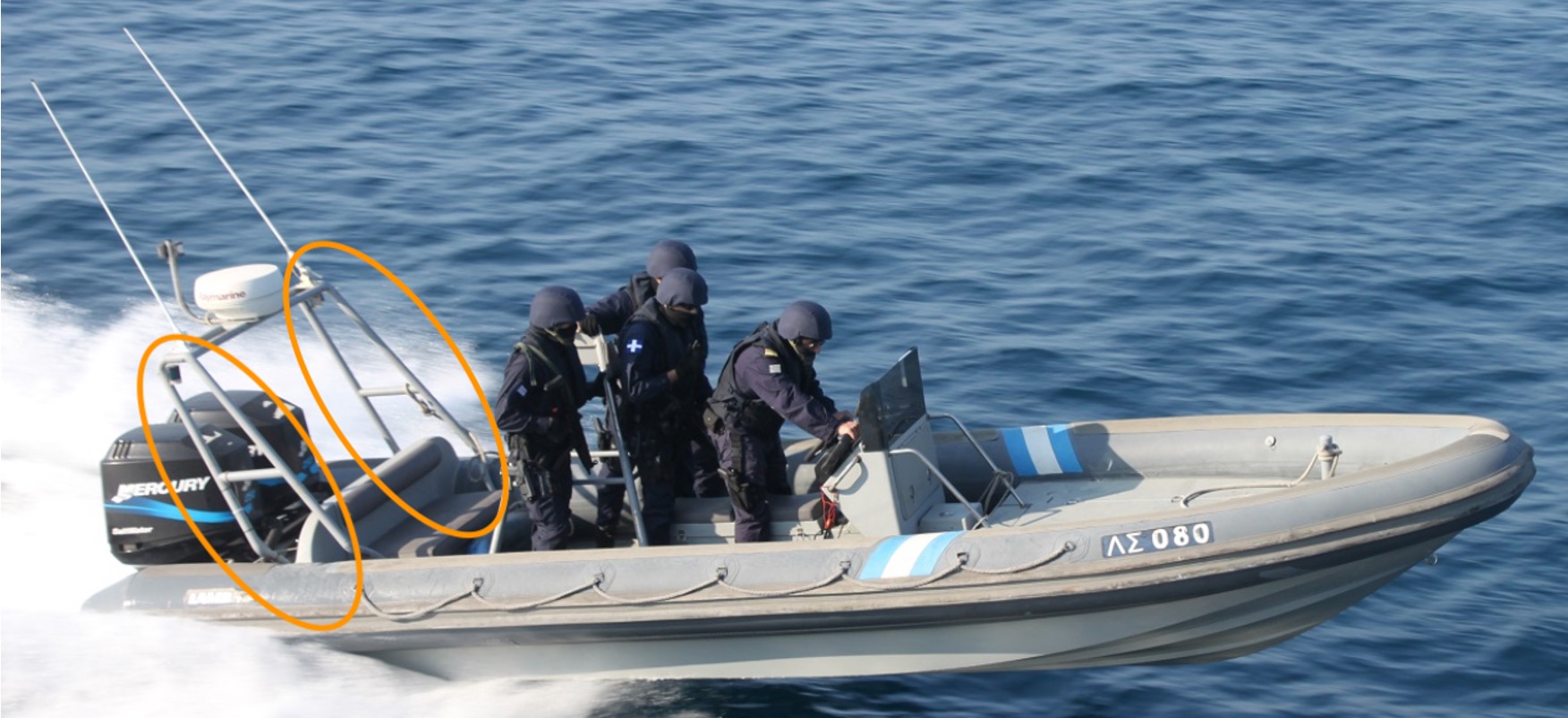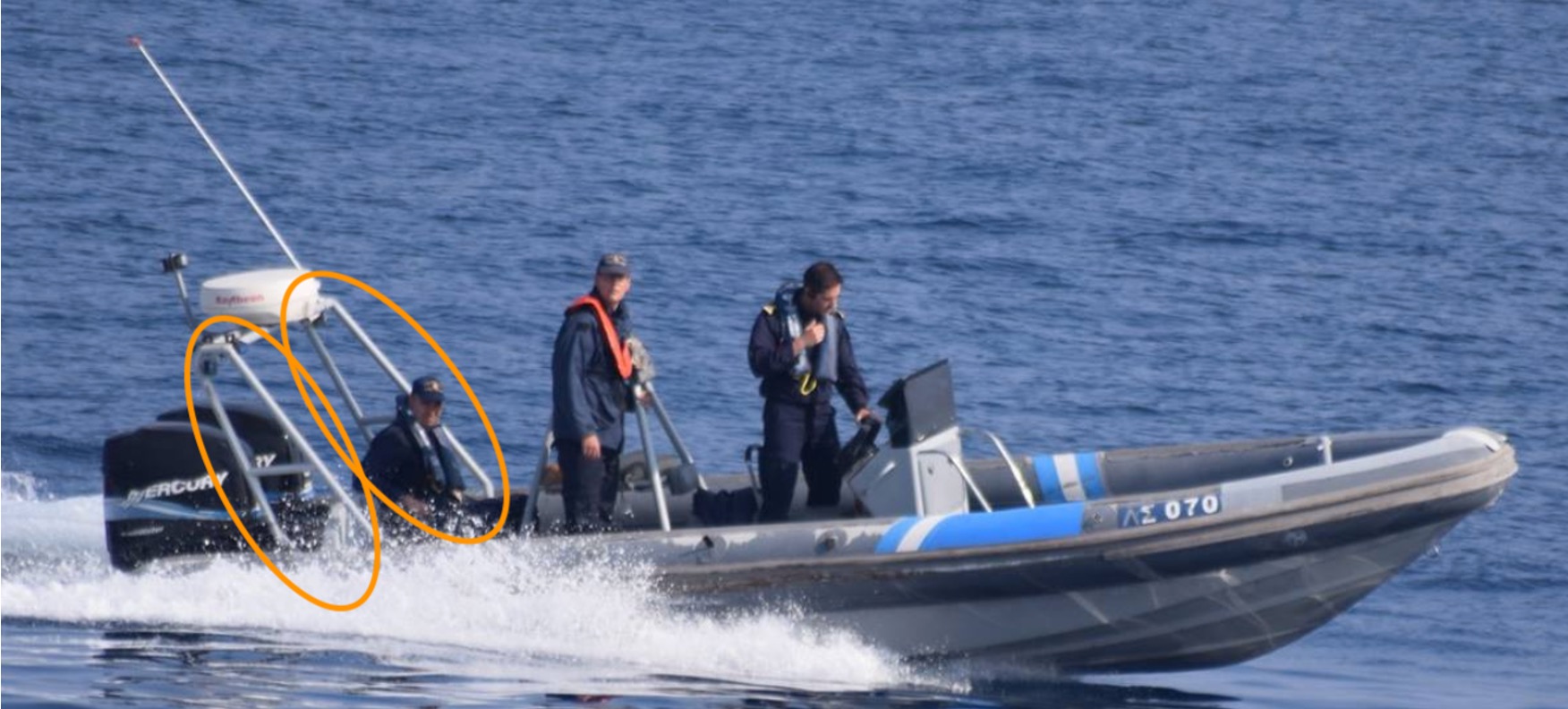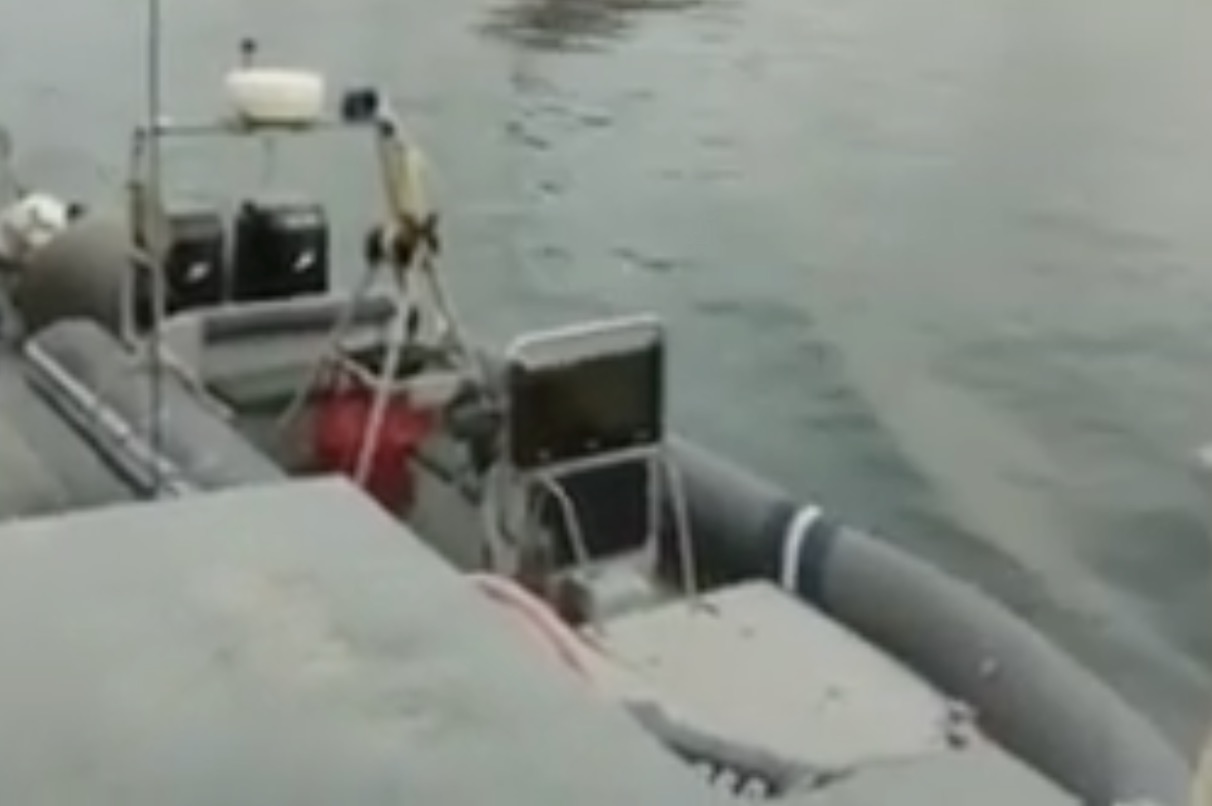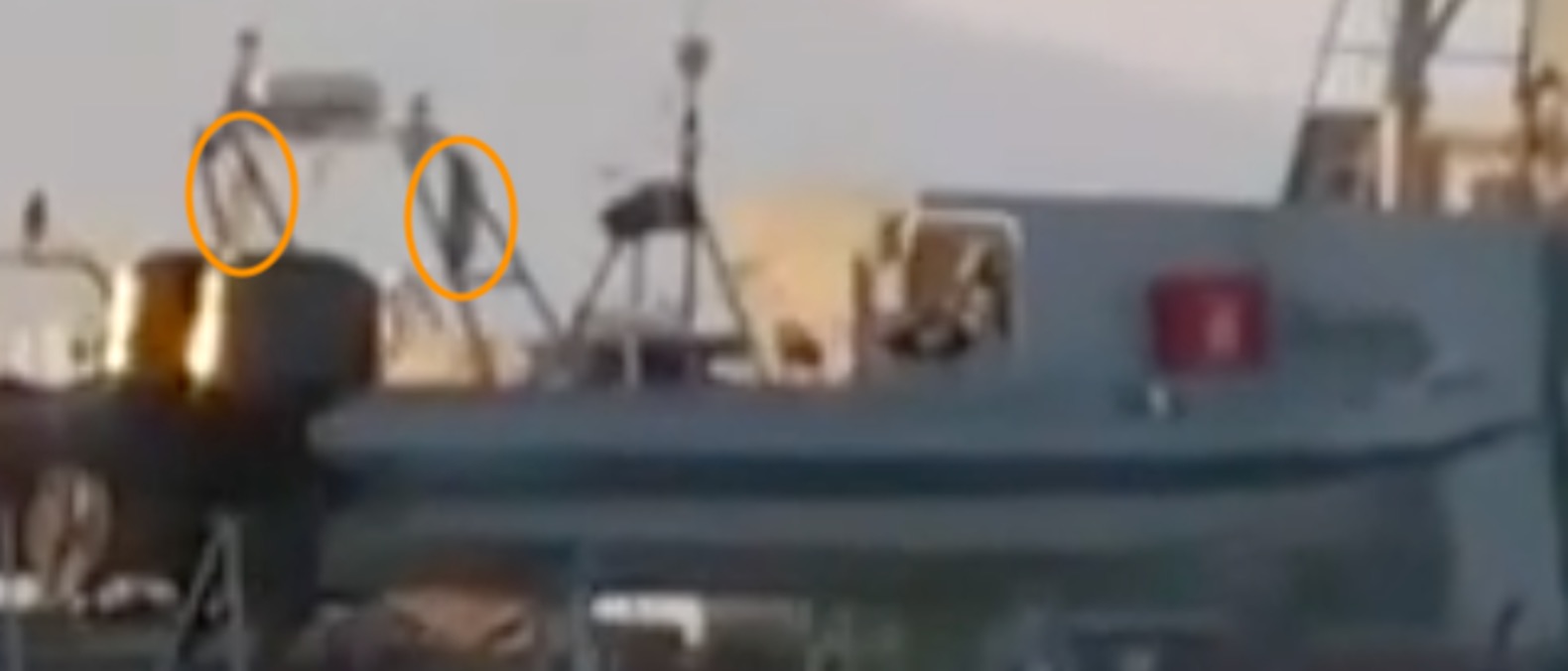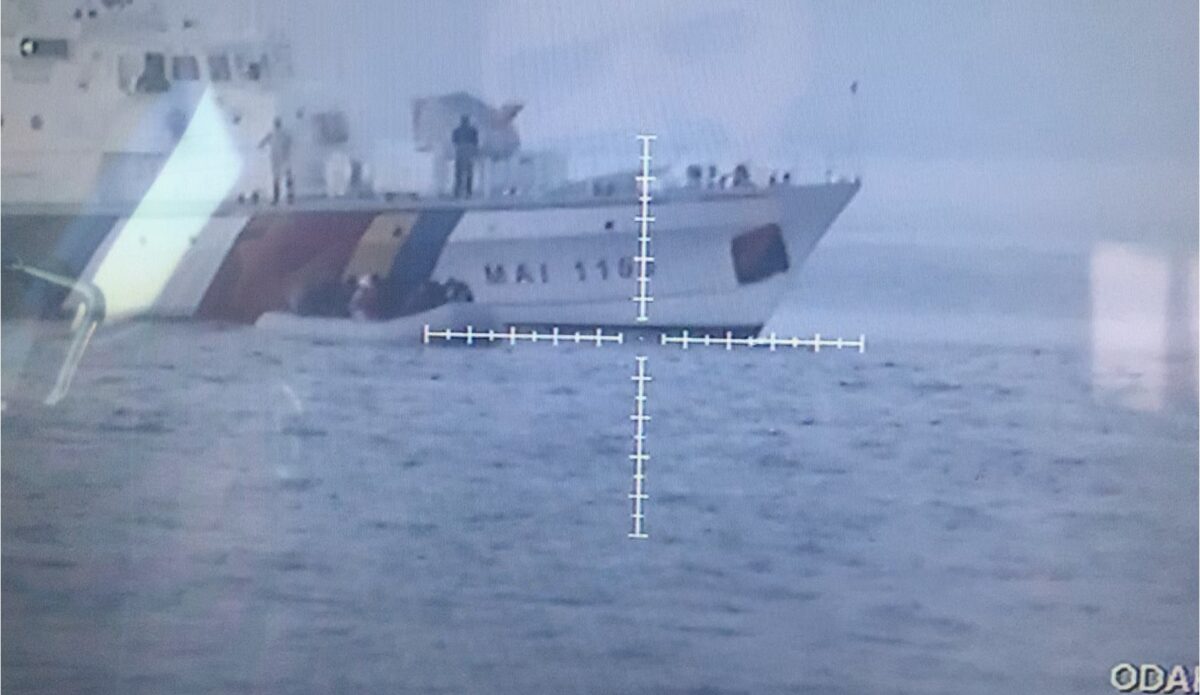Masked Men On A Hellenic Coast Guard Boat Involved In Pushback Incident
Introduction
In recent months, disturbing reports have emerged of unidentified masked men on high speed launches harassing or attacking boatloads of asylum seekers in the Aegean. Witness testimony gathered from multiple sources has described a string of incidents where these launches, known as Rigid Hull Inflatable Boats (RHIBs), have approached vessels carrying men, women in children in the sea between Turkey and Greece and either driven them back, intimidated them or taken their engines, sometimes violently.
These reports appear to be part of a broader alleged pattern of maritime pushbacks, in violation of national and international law.
Until now it has not been possible to identify where the launches are coming from or who the masked men piloting them may be. Video evidence from an incident on June 4 may prove critical in answering these questions.
We have focused on this video, shot on June 4 and published at 1:50 p.m. Greek time on the same day, showing masked men on a RHIB next to a dinghy. One of the masked men boards the RHIB, which then speeds away from the migrants on the dinghy. Our goal was to identify those involved in the operation.
Given the poor quality of the footage, the absence of any visible identifying names and numbers on the boat, the assailants’ mix of non-standard clothing, and the fact that the person holding the phone focused only briefly on the RHIB (probably due to their fear of being detected), there was limited material to work with.
Limitations aside, the RHIB was still the clearest evidence to date in this incident and an opportunity to understand who the alleged attackers were and whether they were affiliated with any organisation. The Greek government has denied being involved in pushbacks .
When given a right of reply, the Hellenic Coast Guard’s spokesperson stated that “Under no circumstances do the officers of the Coast Guard wear full face masks during the performance of their duties”. For a long time the identity of masked men attacking refugee boats has been a mystery, with some speculating about their possible affiliation to right wing groups or criminal gangs.
We used a series of tests in an attempt to identify the RHIB used in the June 4 incident. The first test was to establish whether this specific type of RHIB is operated by the Hellenic Coast Guard (HCG). The second and third tests focused on certain external features of the vessel, which were key in distinguishing it from other similar vessels. In the final test, we identified whether the features revealed by the previous tests remained consistent over time, or whether the RHIBs had been changed or upgraded.
The following piece is a part of an investigation by Lighthouse Reports, ARD and Der Spiegel into illegal pushbacks.
Verification Of Incident Involving Migrant Dinghy
In verifying the events which the migrants in the dinghy were involved in, we first used social media sources. Alarm Phone, an independent group providing a hotline to migrants at sea in distress, tweeted that they had lost contact with the group involved in the June 4 incident at 3 p.m., and later confirmed, at 7 p.m., that the group had been rescued by the Turkish Coast Guard (TCG).
The following day, the TCG posted an update on their website, claiming a group of 51 migrants was rescued off the coast of Çanakkale’s Ayvacık district. The timing provided by the TCG is not consistent with that provided by Alarm Phone. However, we have verified that the boat picked up by the TCG appears to be the same green and white boat depicted in the June 4 video above, and we have identified one person who appears to be wearing a blue jacket similar to one worn by a person in the video of the incident.
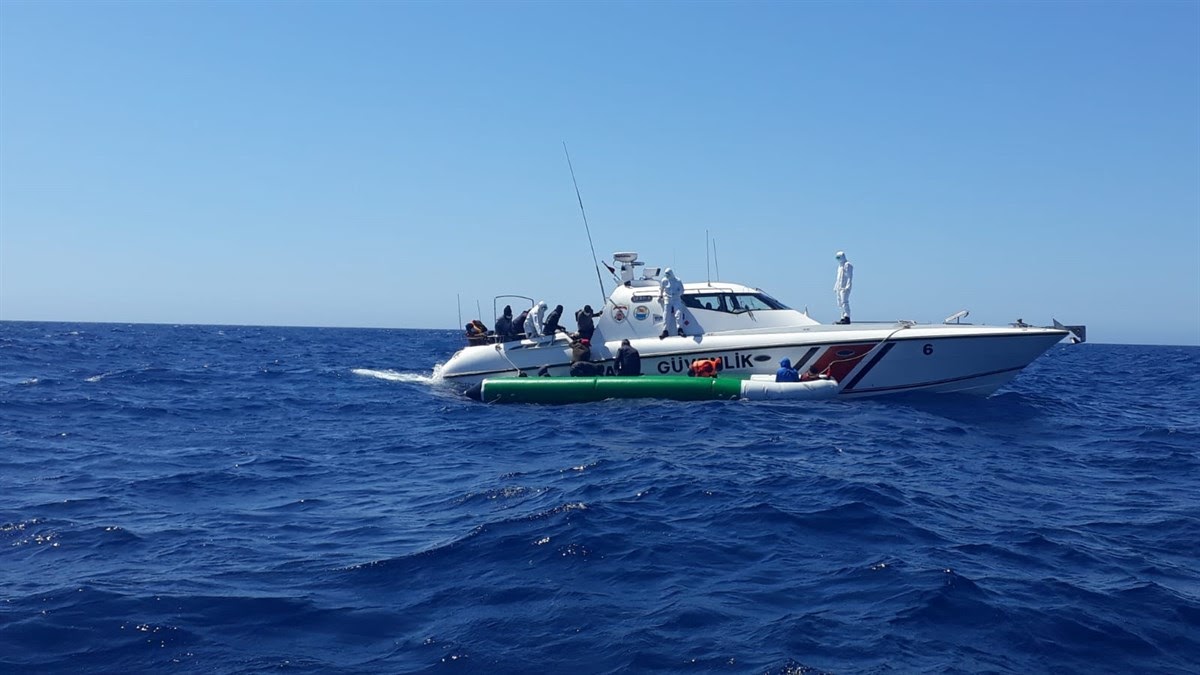
Turkish Coast Guard with boat what appears to match that seen in June 4 video (source)
In the background of the photograph illustrating the rescue operation by the TCG, we see the shore of Babakale. This indicates this was the location of the dinghy, and suggests that it had been most likely heading towards north-western Lesvos before it was intercepted.

Top: Babakale (courtesy of Google/Basarsoft/Copernicus) Bottom: shoreline see in TCG image
Identification Of RHIB Involved In The June 4 Incident
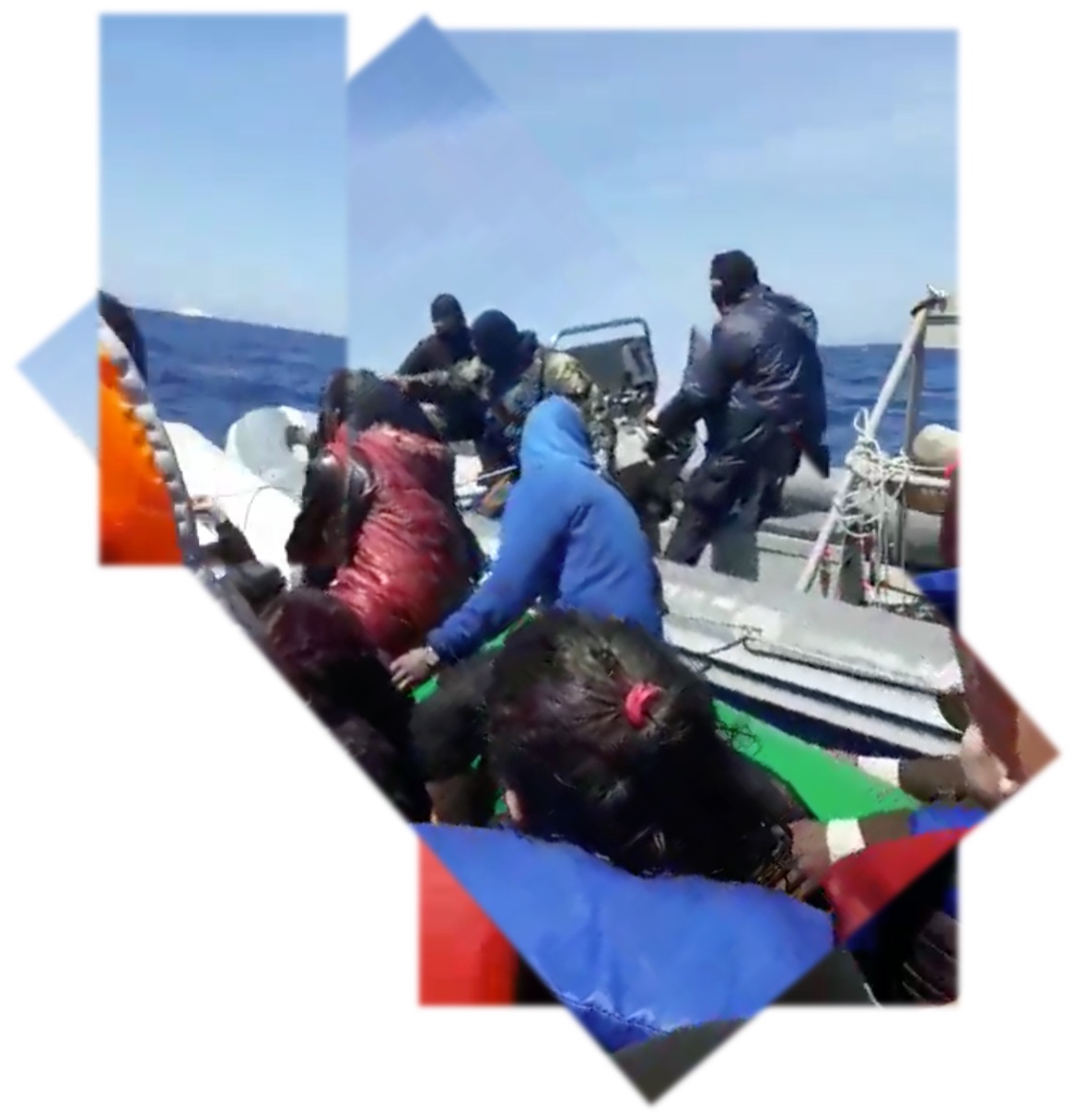
Composite image of RHIB videoed in June 4
We can see the RHIB’s colour is light grey and features two metallic structures at the rear: a smaller pyramidal shape (visible above on right side of image) and a larger one mounting what appears to be a radar (white dish; marked in yellow below). The RHIB is powered by two black engines (marked in red below).
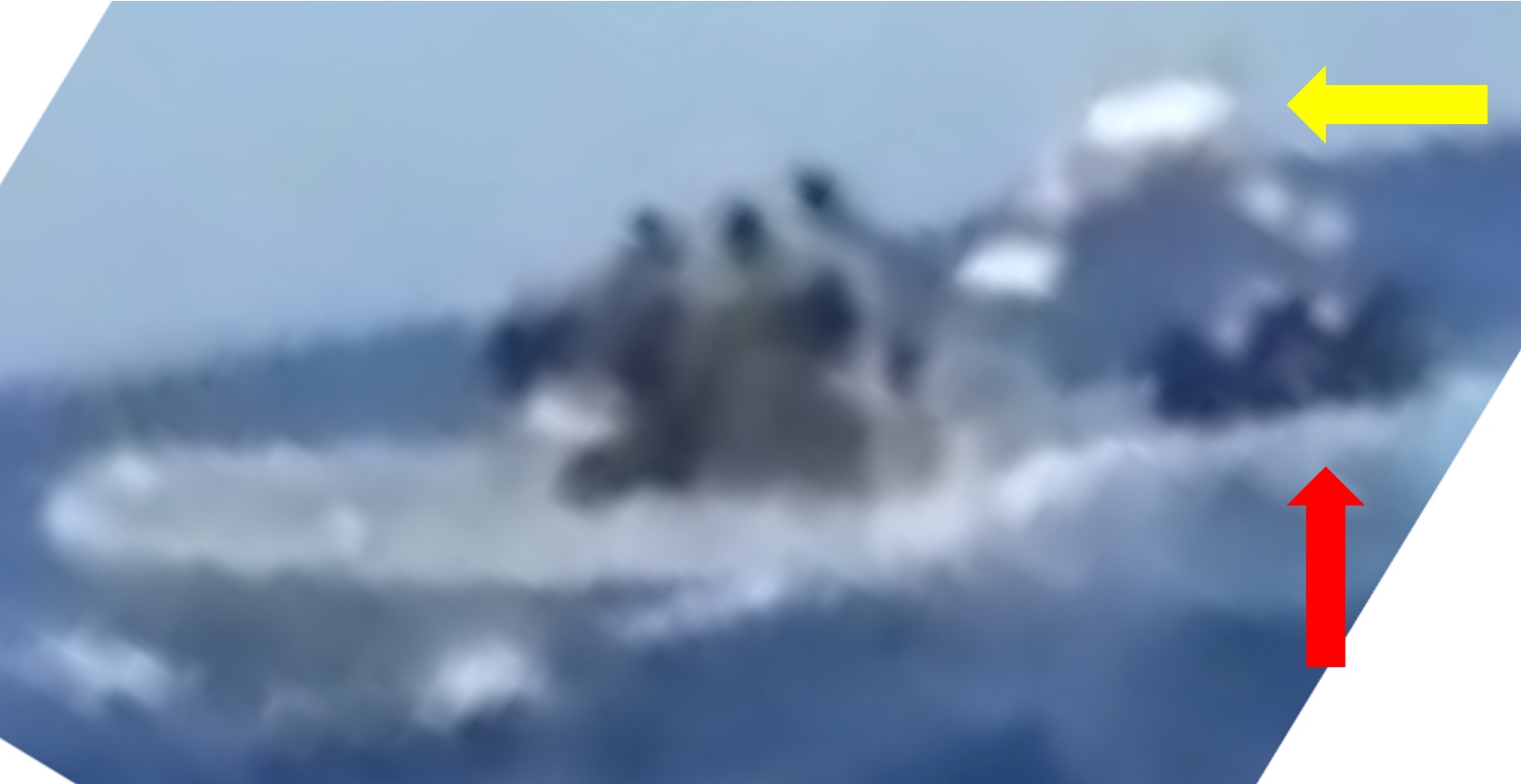
Note the apparent radar marked in yellow, and the two engines marked in red
Clothing Of RHIB Occupants
The men aboard the RHIB in question wear irregular clothing. All four have their faces covered or semi-covered.
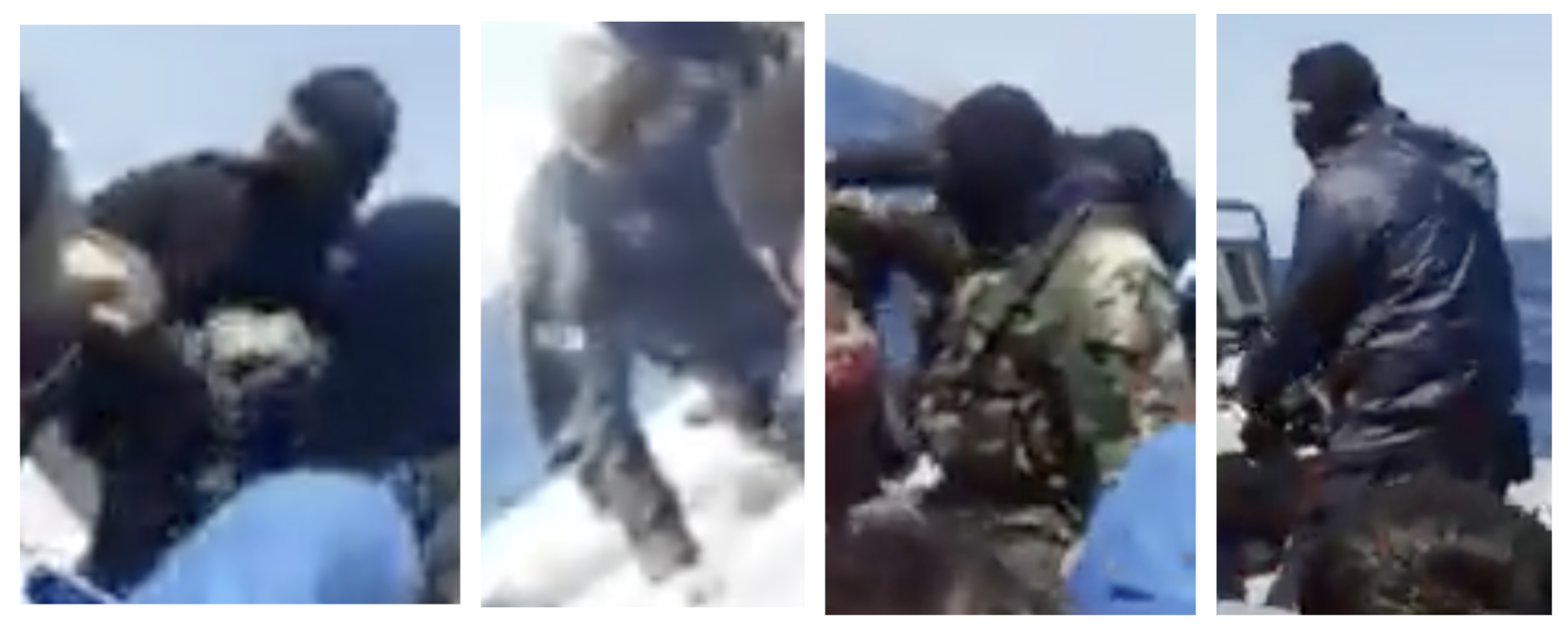
Men seen in June 4 video on board RHIB
The mix of dark clothing, military fatigues, and what appears to be diving gear suggests the men — who are not heard speaking a word during the entire video — intended to conceal their identities and origin.
The fourth man in the image above is wearing clothes which appear to be similar to standard issue clothing for the Hellenic Coast Guard, as the picture below shows.
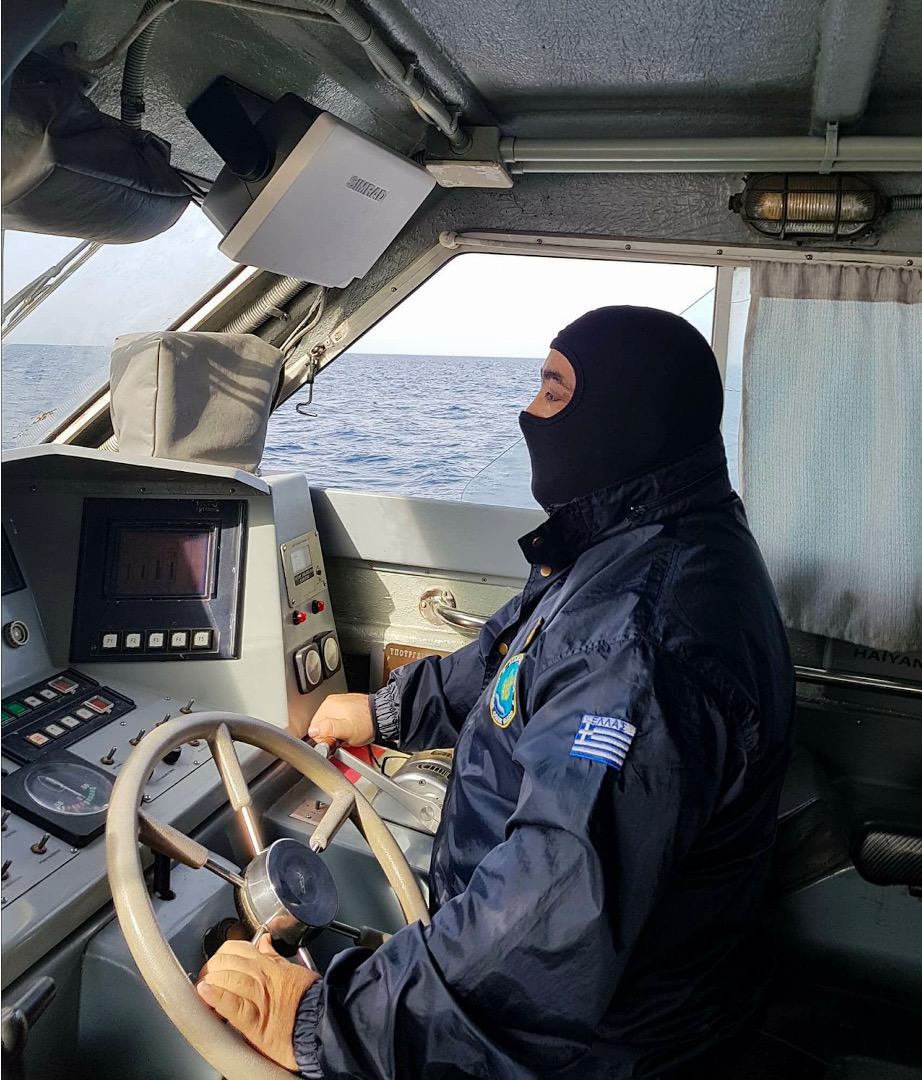
(Source) March 3 2018
The RHIB
The boat in question appears to be manufactured by Lambro Boats, now Motomarine, which lists among its clients the Hellenic Coast Guard.
While the RHIB’s equipment is fairly standard, the pyramidal metallic structure mounted on its deck is a feature unique to this specific class of boat: it was applied to facilitate the deployment of the RHIB into the water from its mothership.
We have observed that this RHIB model appears to only operate off Israeli-designed Sa’ar 4.5-class Offshore Patrol Vessels (OPVs), of which there are three in the HCG fleet. This type of vessel mounts a crane on its stern, which can deploy two RHIBs, one on each side. Of all HCG patrol vessels observed, the three Sa’ar OPVs are the only ones mounted with a stern crane which deploy RHIBs by hooking their pyramid.
Although OPV ΛΣ-050 uses a crane to deploy its RHIB, it does not appear to use this pyramid, but rather straps attached to the RHIB. Meanwhile ΛΣ-090 deploys its fast RHIB using a slide.
As suggested by observed evidence and by specialized analysis, each Sa’ar OPV carries two RHIBs: a grey one primarily for pursuits, and an orange one for Search and Rescue (SAR) operations.
The three OPVs operated by the Hellenic Coast Guard that operate these RHIBs are ΛΣ-060, ΛΣ-070 and ΛΣ-080.
It can be observed that the RHIBs bear the mothership’s name on their bow, on both sides, like these views of RHIBs ΛΣ-070 and ΛΣ-080 show:
However, ΛΣ-060 has been observed with its name missing from both sides.
This initially suggested that the RHIB visible in the June 4 video could have been ΛΣ-060. However, precisely due to the fact that the particular RHIB did not bear any identifying name on its left side, we have focused on other elements to determine its identity.
The Stripe Test
The above-mentioned video shows the RHIB in question not bearing any name or number on its left bow; however, it does seem that a stripe is visible, which appears to be blue. This stripe becomes more evident after editing the frame’s contrast (below). The position of this stripe is consistent with the other RHIBs of the same type, i.e. on the side, between the deck and the bow.
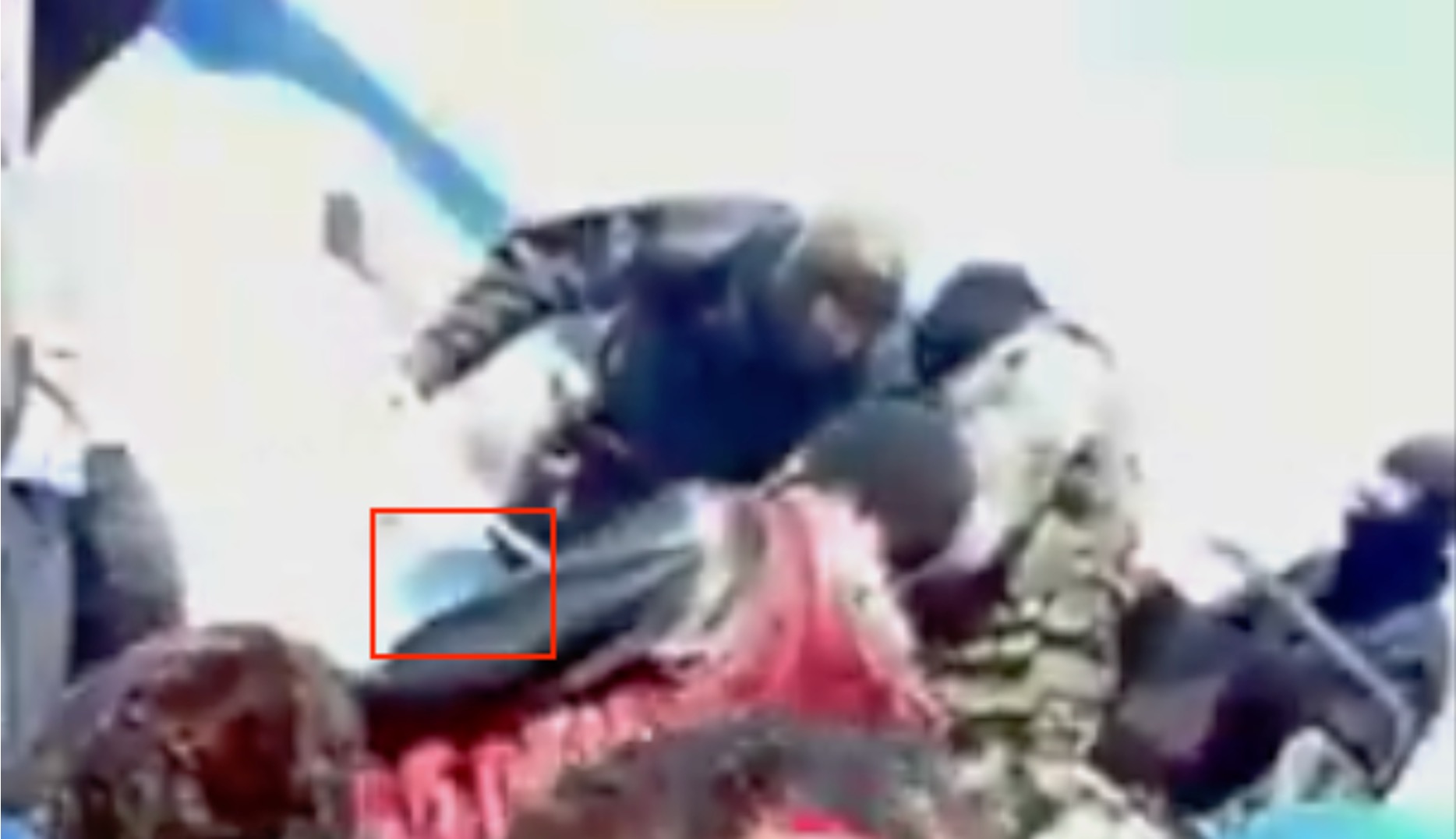
Although the view is obstructed, the presence of this stripe and its position are consistent with the other RHIBs of the same model in service with the HCG.
The Bar Test
The RHIB visible in the video has a metal bar above its windshield.

We have observed that of the three RHIBs currently in service with the Sa’ar-class OPVs of the HCG, RHIBs ΛΣ-070 and ΛΣ-080 do not mount a metal bar above their windshield.
By applying this second test we can infer that the RHIB which participated in the incident recorded in the June 4 video is not only in service with the HCG, but that it is likely the third RHIB of this same type, ΛΣ-060.
The Fenders Test
The RHIB in question has two small fenders tied to the radar arch.
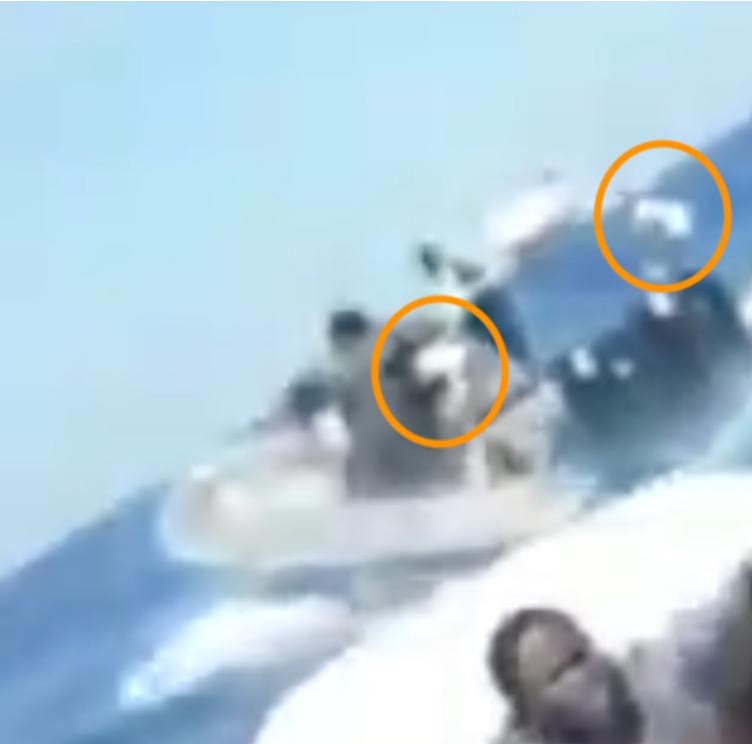
Neither ΛΣ-070 nor ΛΣ-080 have been observed mounting two small fenders on the side of their radar arches.
This third test also indicates that the RHIB which took part in the June 4 incident could be RHIB ΛΣ-060.
The Time Test
For this evidence to be relevant in reviewing the case at hand it is necessary to verify that the external characteristics we use to determine the identity of the different vessels were still valid at the time of the incident.
On the occasion of exercise “Poseidon 2018”, the HCG allegedly deployed OPV ΛΣ-080 with RHIB ΛΣ-080. The RHIB was spotted, as shown in the picture below, with newer black ropes on its right side, which replaced the older grey ones sported in the 2014. Below the rope is a light blue line running along both sides placed above a newer layer of black rubber.
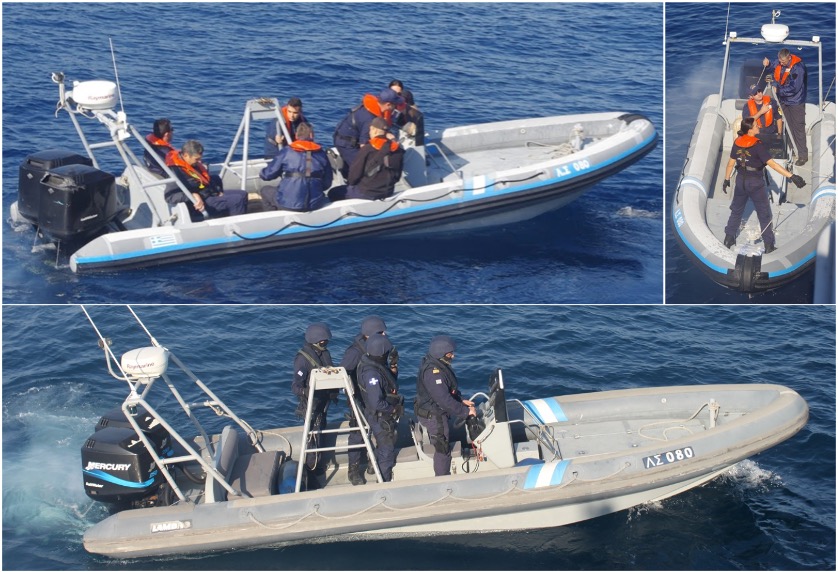
Top: RHIB ΛΣ-080, September 26, 2018, Bottom: RHIB ΛΣ-080, June 13, 2014
Meanwhile, RHIB ΛΣ-070 was spotted above its mothership in this article, dated May 15, 2019, which allows for an examination of any recent changes.
Notice that the RHIB ΛΣ-070 photographed above is in mint condition. After searching for the most recent available footage and imagery, we can conclude that between September 2018 and May 2019 all three RHIBs had been through a maintenance process of some degree.
In the comparison below, the 2019 photographs of RHIB ΛΣ-070 show that new rails were attached to the sides of the boat for mounting ropes, and overall appears much less worn out compared to 2018. Additionally, while its name and HCG flag were repainted, no bar has been added over the windshield and no fenders to its radar arch.
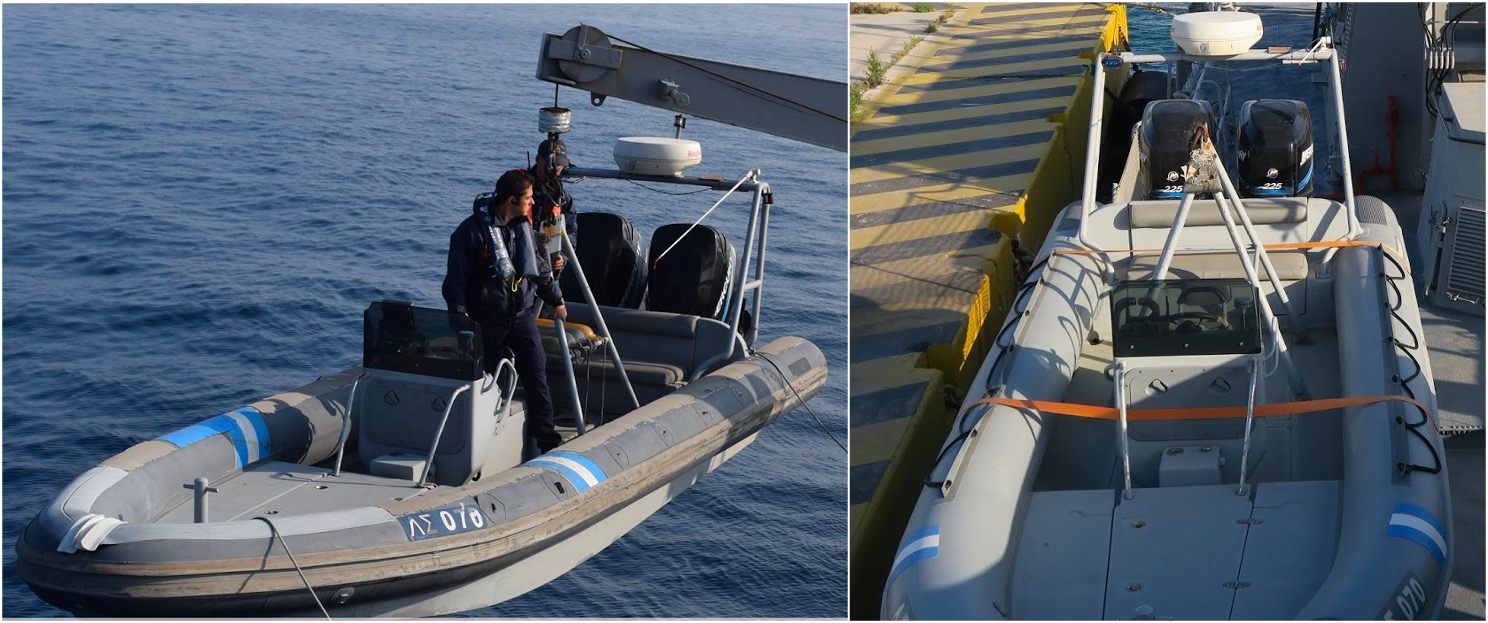
Left: October 24, 2018, Right: May 15, 2019
RHIB ΛΣ-060 was spotted at the Port of Piraeus in May 2019, during a religious event. This time we can unequivocally say the boat we see is RHIB ΛΣ-060, since as part of the renewal process it has recently undergone, the boat now has its number just about visible on the right side of the bow.
Additionally, it can be confirmed that the metal bar over its windshield has not been removed and the same occurred for the HCG colours on its left side. The view over the RHIBs radar arch and left side is not very clear, which requires additional research.
Another video from the same date, depicts RHIB ΛΣ-060 from its left side.
The missing name indicates that despite the renewal this RHIB went through, its left side has not been provided with the RHIB’s name yet.
The video reveals yet another important element: the left side ropes have also been unaffected by the maintenance process. These ropes do not appear new and black in colour as ΛΣ-070’s, and there is no blue line above a thick layer of black rubber like on ΛΣ-080. Instead, these rope are rather grey, worn out, and tied to rings attached to ΛΣ-060’s side, just like the RHIB visible in the June 4 video.
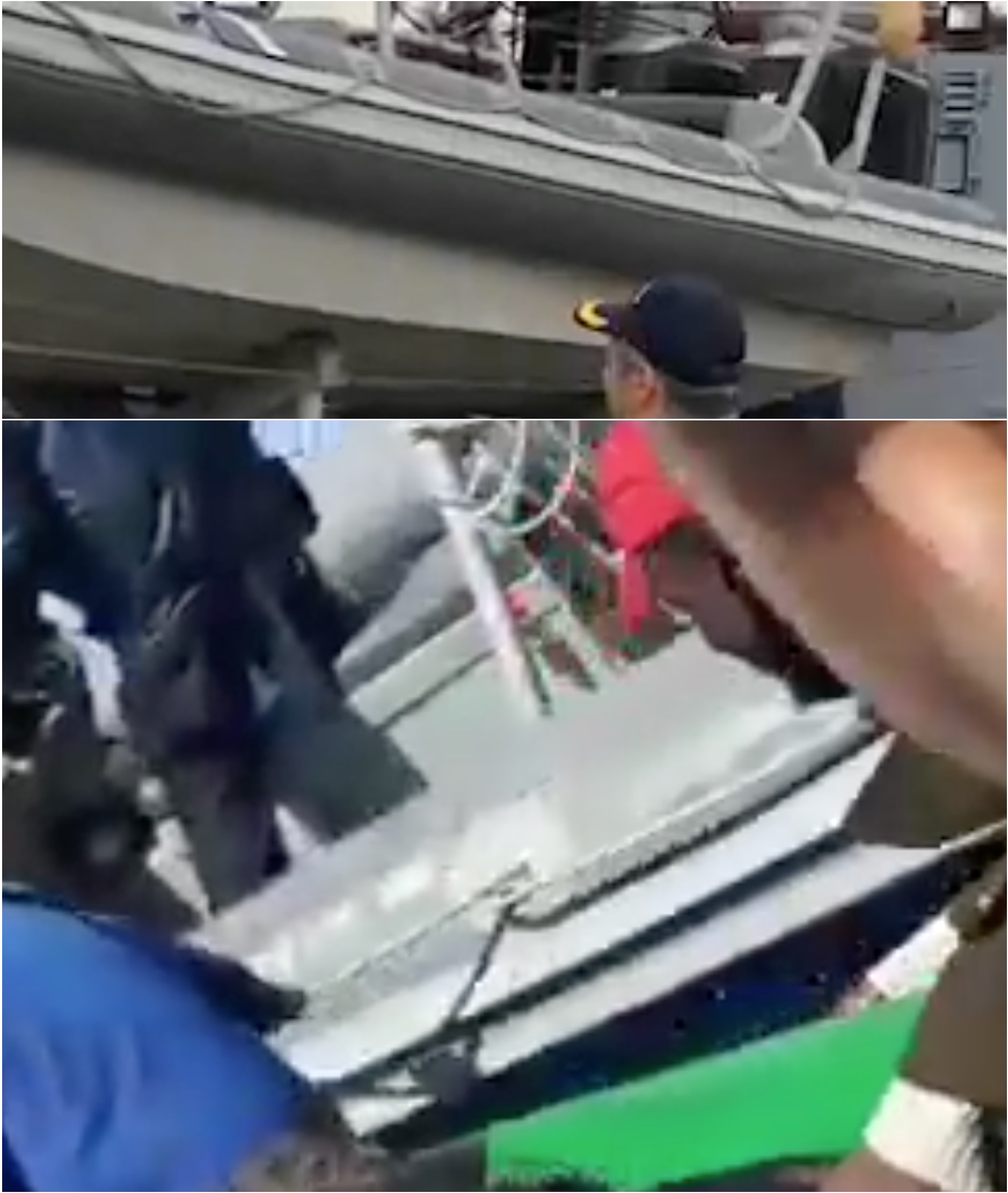
Top: ΛΣ-060, Bottom: RHIB in June 4 incident
Finally, RHIB ΛΣ-060 was last spotted in September 2019, allegedly patrolling off the coast of Mytilene aboard OPV ΛΣ-060. An overview over the RHIB’s stern reveals that there are indeed two small fenders tied to both the radar arch’s sides.
The Mothership
On June 4, 2020, following the incident, an eye witness in Lesvos photographed a vessel off the coast of Lesbos at 5:04 p.m. The vessel in the photograph appears to be a Sa’ar-class OPV, although we cannot discern its name. One hour later, in the port of Mytilene, the same source reportedly spotted OPV ΛΣ-080 docked at the port.
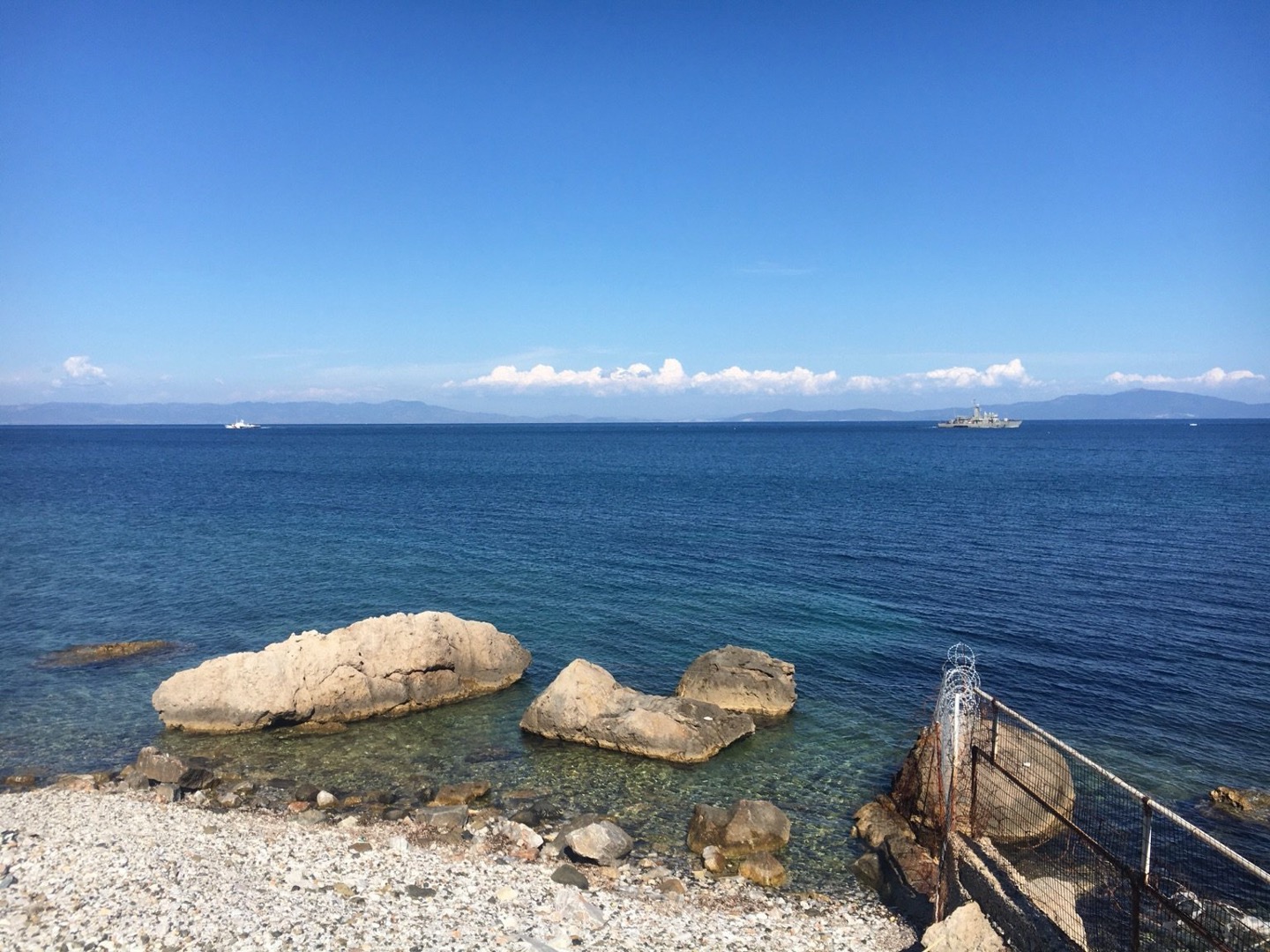
In unpublished footage, an unnamed source spotted OPV ΛΣ-080 and filmed it while docked at the port of Mytilene on June 9. RHIB ΛΣ-060 was loaded on its stern.
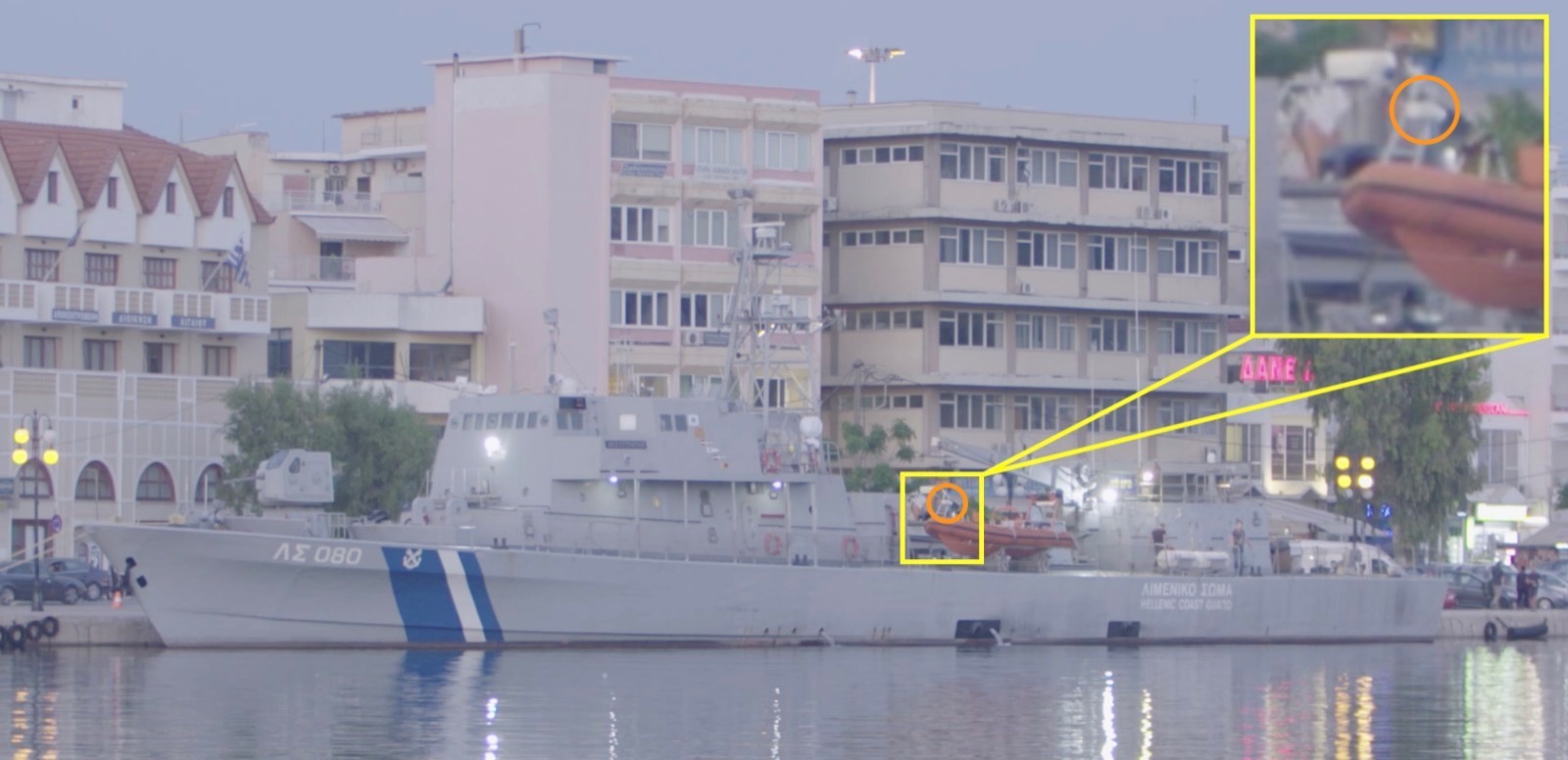
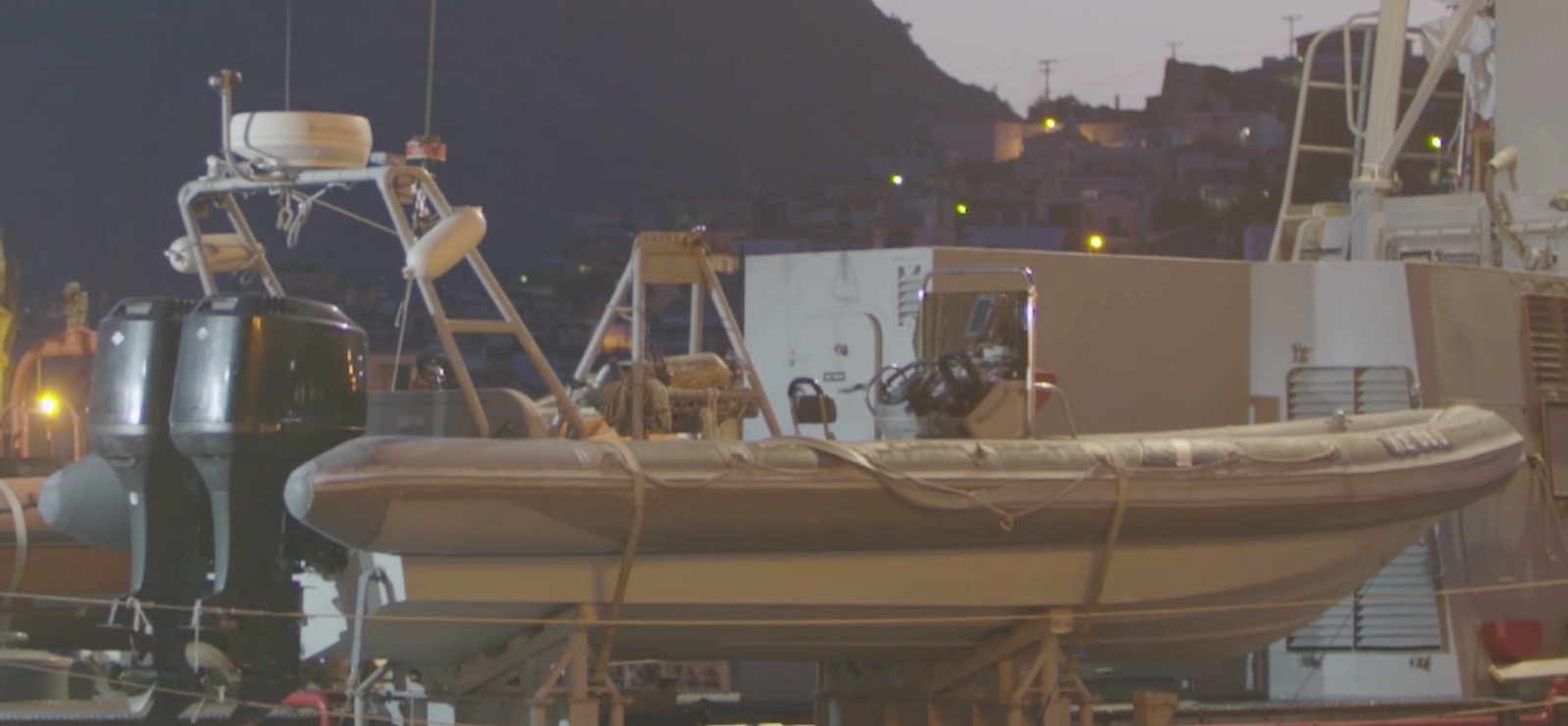

Metadata of above image
Despite the inability to clearly read the name from its right side, it is possible to assess its identity with certainty by going through some of the unique features that its sister RHIBs do not have and which are visible on the RHIB that took part in the June 4 incident: the two small fenders are tied to the radar arch, the metal bar is present above the windshield, and grey rope is tied midway to its side.
Evidence indicates that RHIB ΛΣ-060 has been embarked on OPV ΛΣ-080 since at least May 2020.
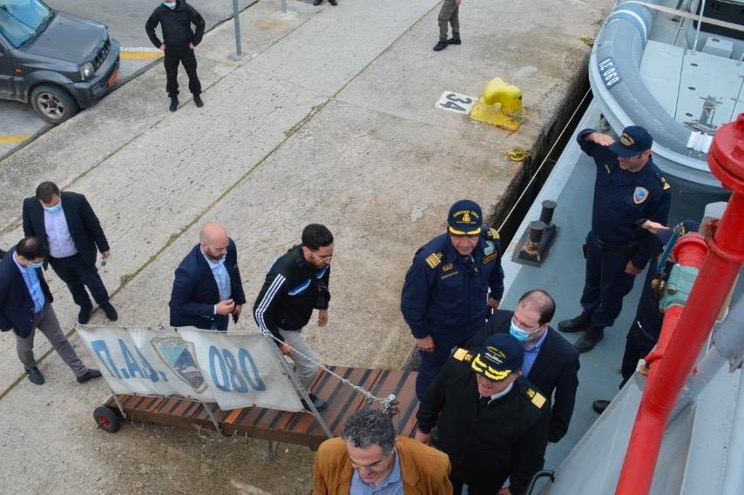
RHIB ΛΣ-060 embarked on OPV ΛΣ-080. May 5, 2020
In a different pushback incident, also from June 4, a 17 year old Afghan refugee shared two videos showing him with other refugees on a struggling boat. The video was posted within a Facebook group for Lesvos volunteers, where the migrants claimed they had been attacked by the HCG earlier and were begging people on the internet to come and save them. In one of those videos, we see HCG OPV ΛΣ-080 passing by them, allegedly creating waves to push them back to Turkey.
On its stern, it is possible to spot what appears to be RHIB ΛΣ-060, identifiable by its fenders on the radar arch.
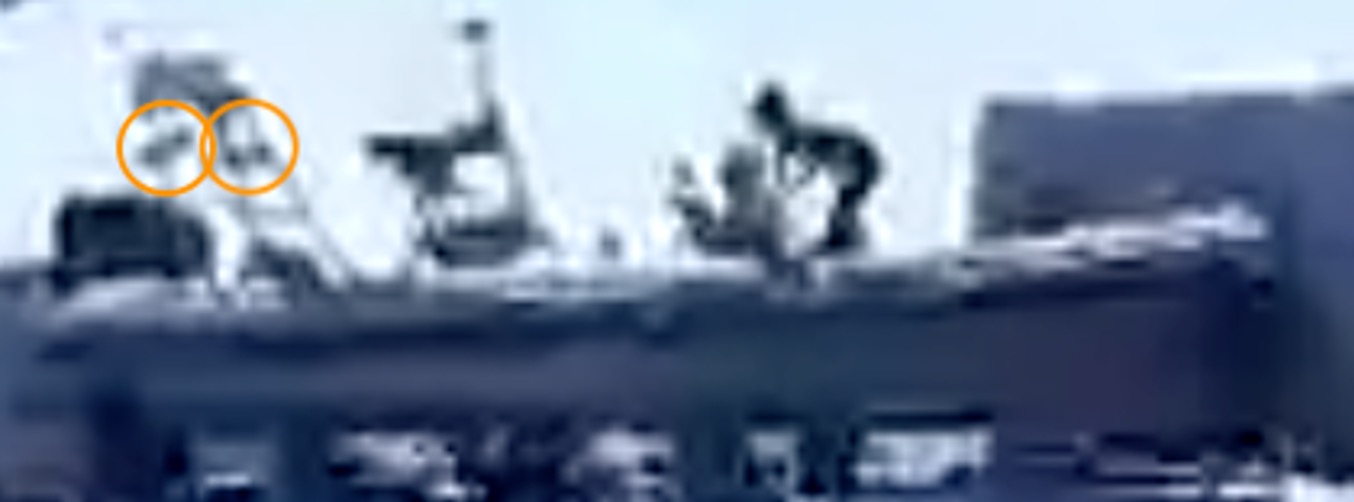
The video appears to be consistent with northeastern Lesvos, close to the islets of Aspronisia, Tsoukalas and Aspri Plakouda. The dinghy on the video was eventually rescued by the German NATO vessel “Berlin”, and was brought to the shores of Palios, three kilometers North of the islets. These videos indicate that ΛΣ-080 was operating in northern Lesvos on that day.
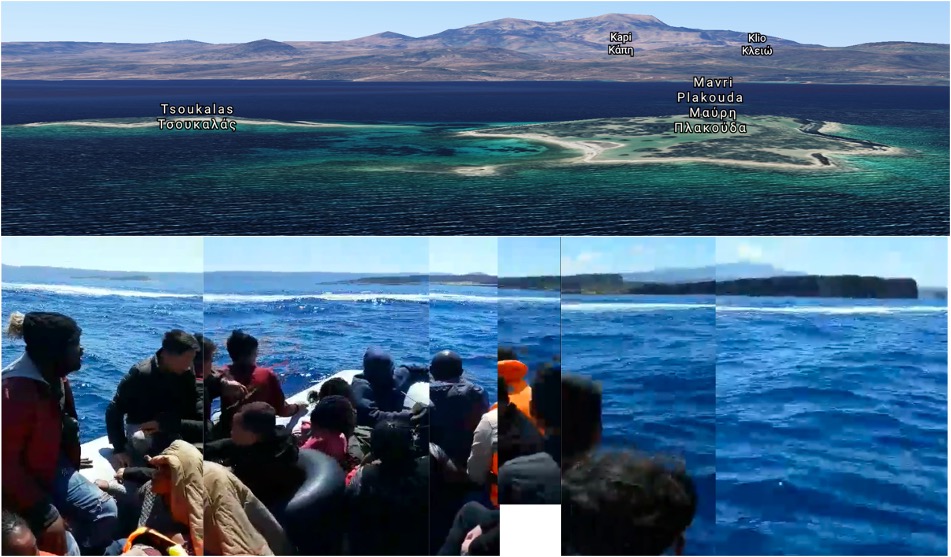
From the geolocation of the two migrants’ dinghies (the first one, in which the masked men were involved, and the second, which was ultimately rescued by the NATO vessel) it is possible to claim that OPV ΛΣ-080 was in the area where both incidents occurred on June 4.
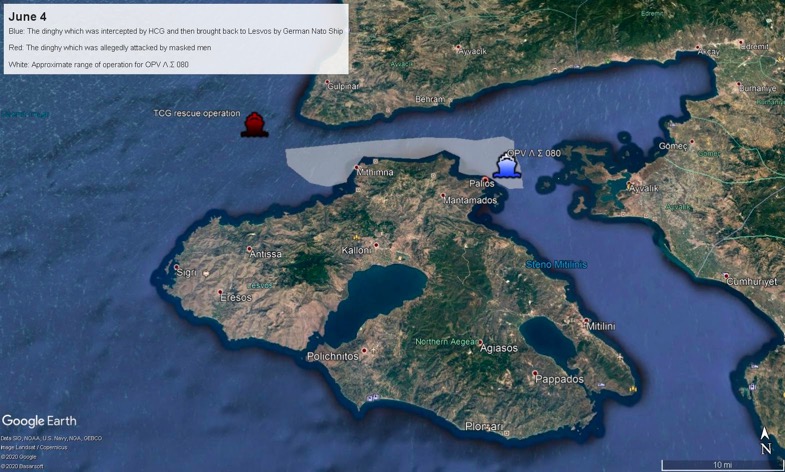
Conclusion
This investigation began with analysing the video with the masked men and primarily focused on the RHIB they were filmed operating. That very distinctive vessel suggests that the Hellenic Coast Guard was involved in the incident. It has unique features — such as the metallic pyramidal structure at the deck, which is a key characteristic of this type of RHIBs, deployable by crane by one class of OPVs of the HCG — and the HCG emblem visible on its side.
Subsequently, out of three possible RHIBs operating off a specific class of as many OPVs, the research had to identify the one RHIB in the video. In order to do that, tests were developed, based on the features we were able to distinguish from the video to narrow down all possibilities to one boat, and one mothership.
The “bar test” and the “fenders test” were functional in identifying RHIB ΛΣ-060, as it was the only RHIB out of three that carried both a metal bar over its windshield and fenders on both sides of its radar arch. With the application of the time test, we compared the RHIB shown in the June 4 video with the most recent pictures of the three RHIBs.
This revealed that all of the RHIBs had recently gone through a renewal process, which, however, kept RHIB ΛΣ-060’s unique features intact, while the other two RHIBs’ exteriors were upgraded. RHIB ΛΣ-060 preserved its anomalous features, like the grey rope tied to rings glued to its sides, its metal bar, and fenders.
After determining that RHIB ΛΣ-060 was the one visible in the June 4 video and that it had been embarked on OPV ΛΣ-080 since at least May 2020, we geolocated a video from another pushback attempt to prove that OPV ΛΣ-080 was operating in Northern Lesvos on that day and we confirmed it was carrying RHIB ΛΣ-060. Additionally, we have strengthened this link with footage showing RHIB ΛΣ-060 on OPV ΛΣ-080 at the port of Mytilene just a few days after the incident.
This investigation was jointly conducted by Leone Hadavi and Bashar Deeb
